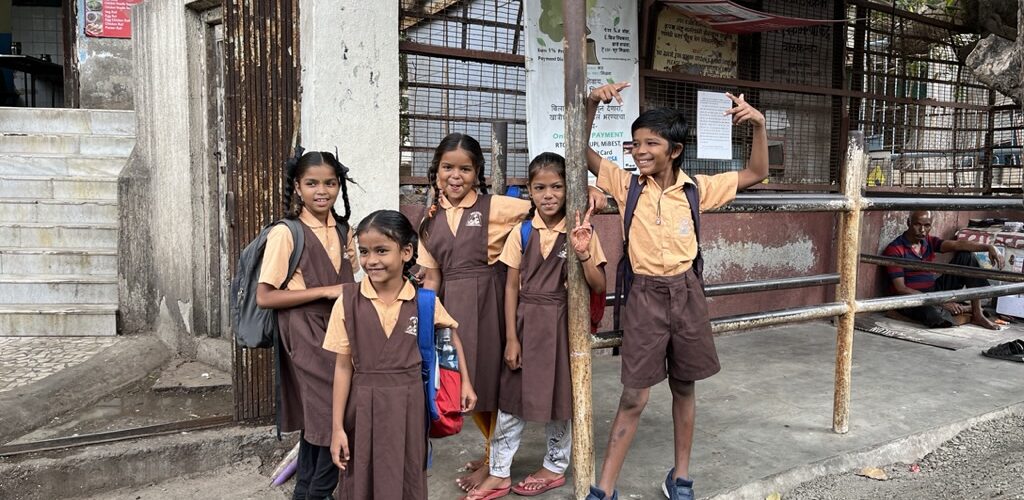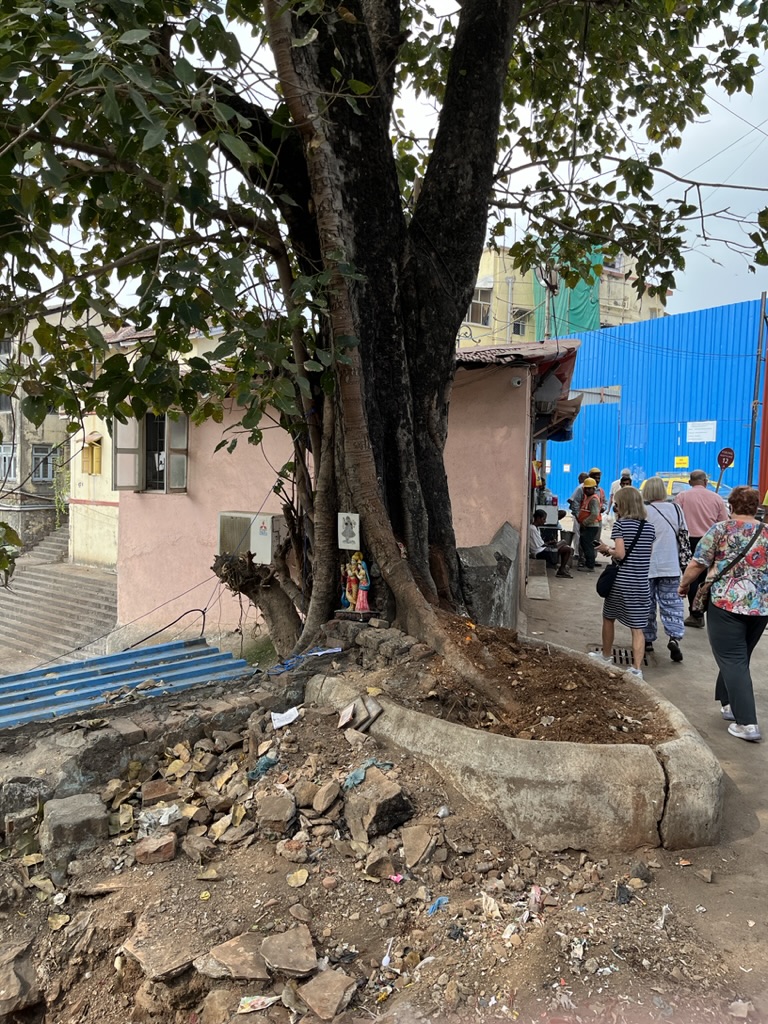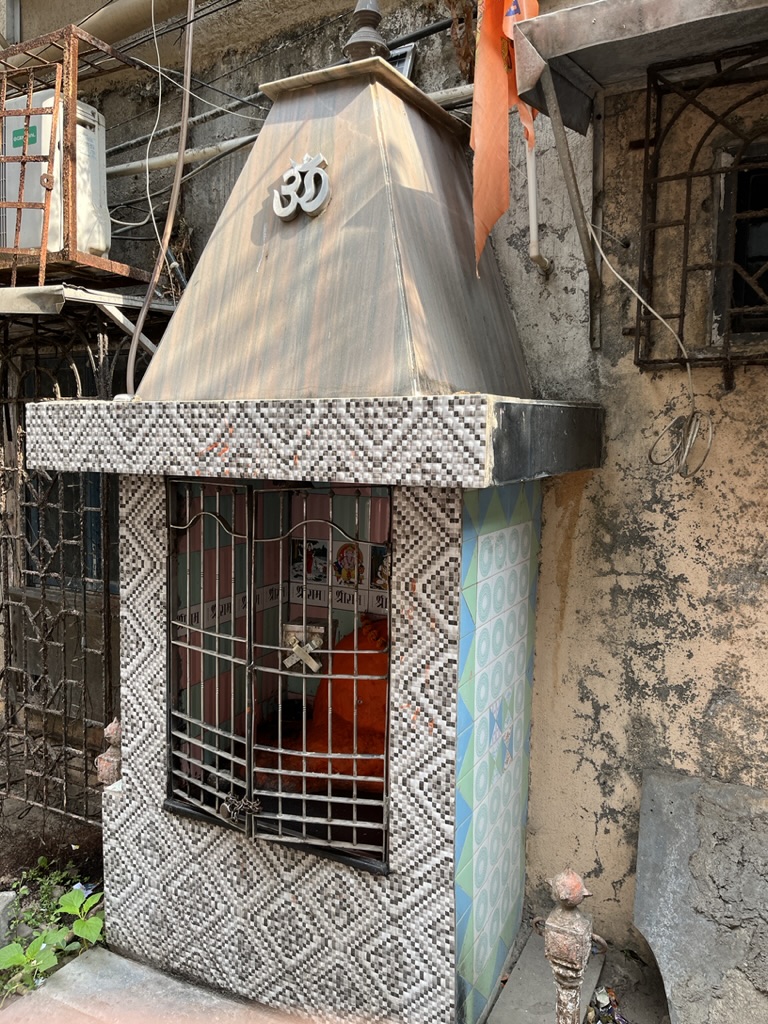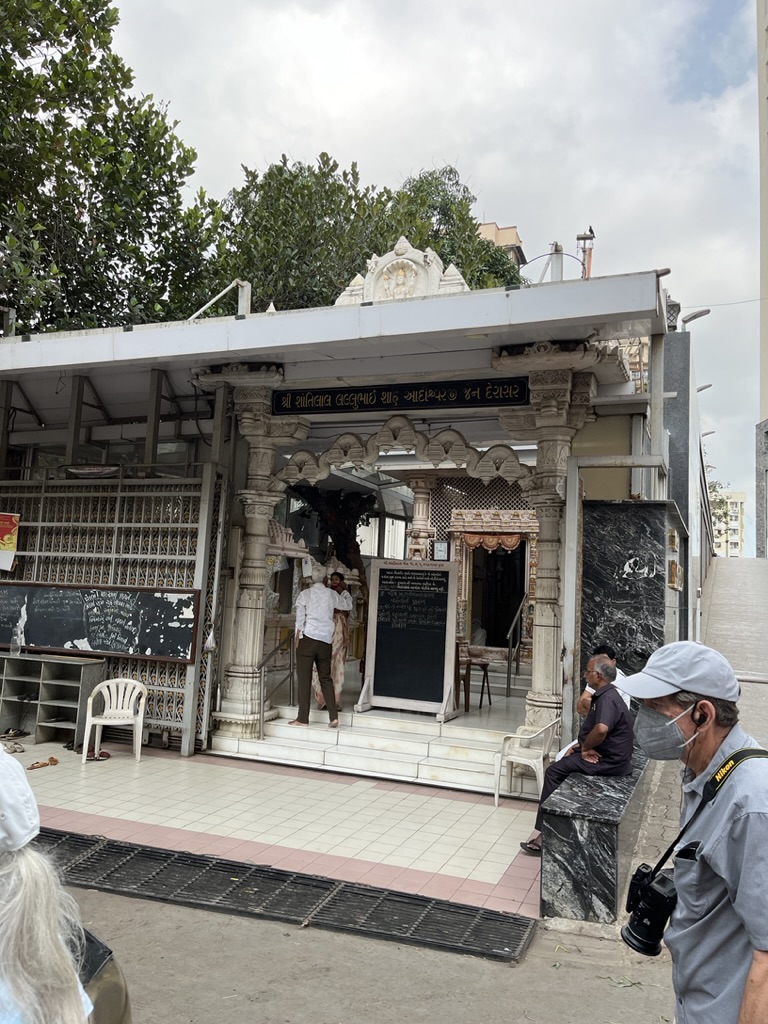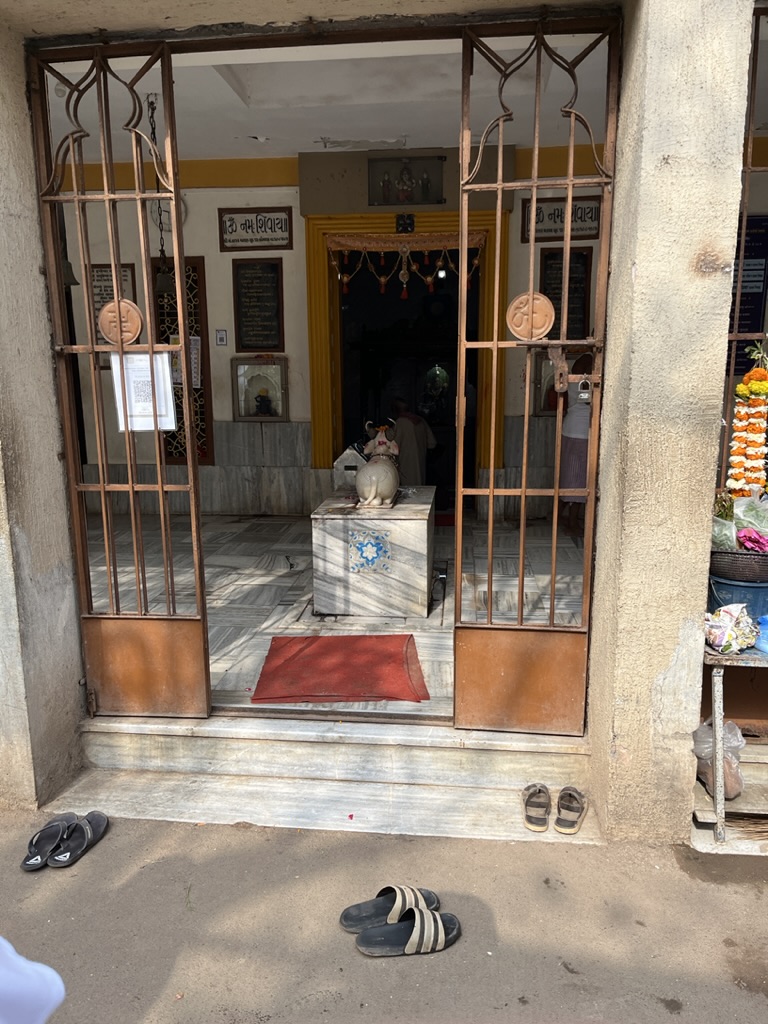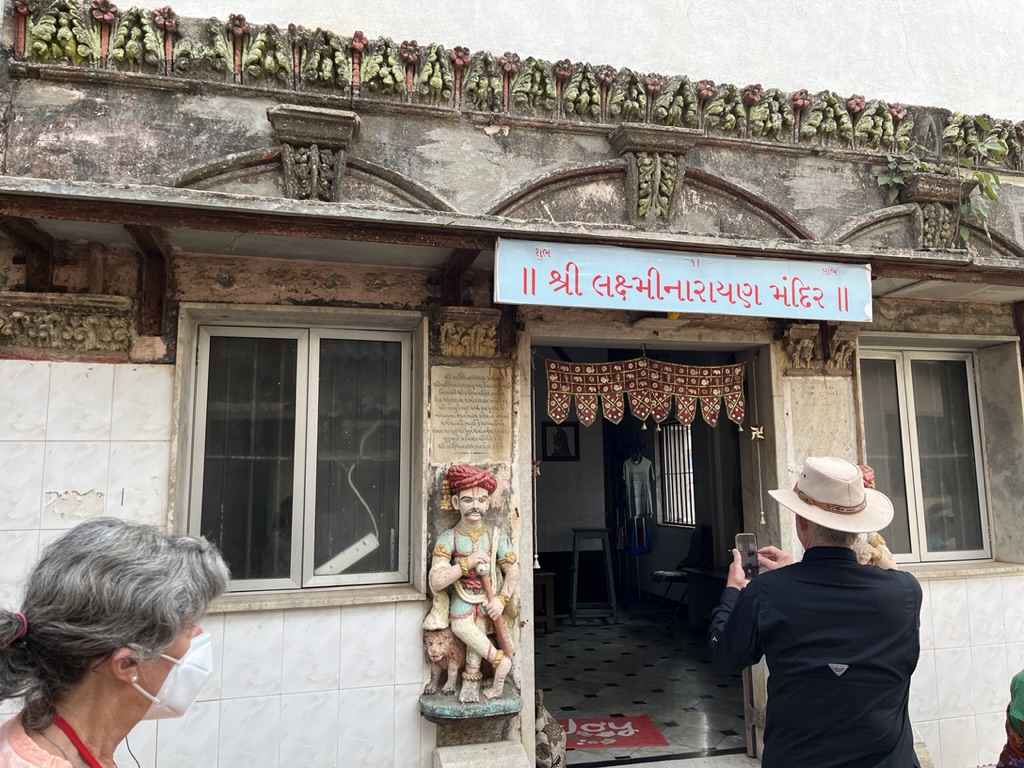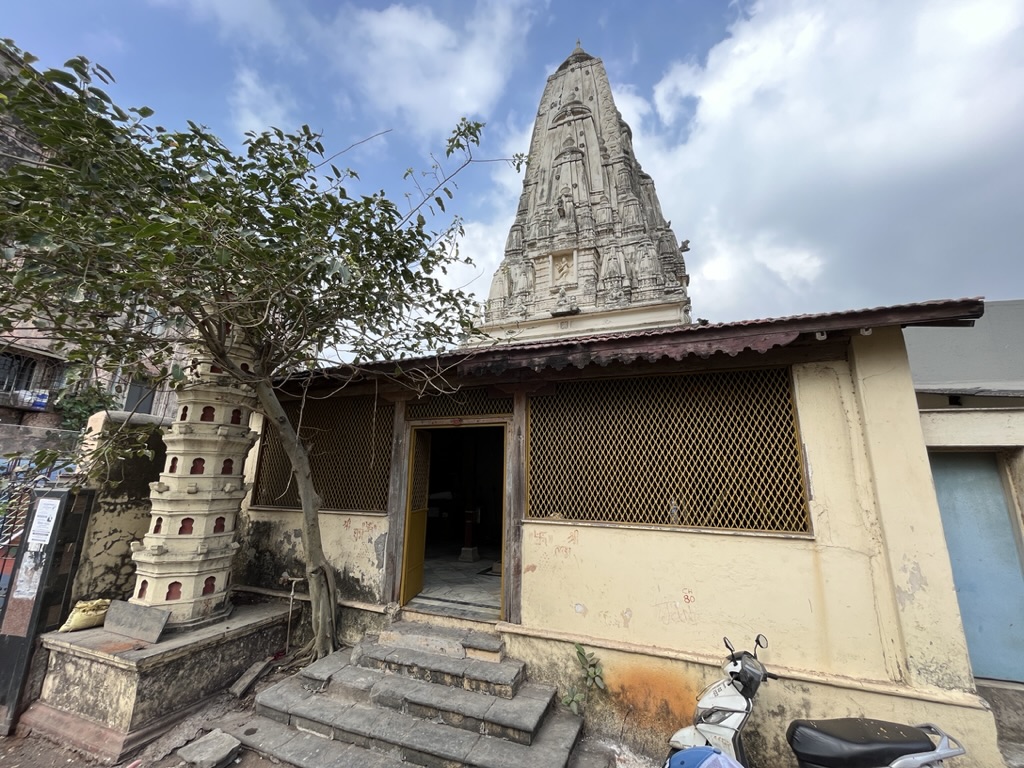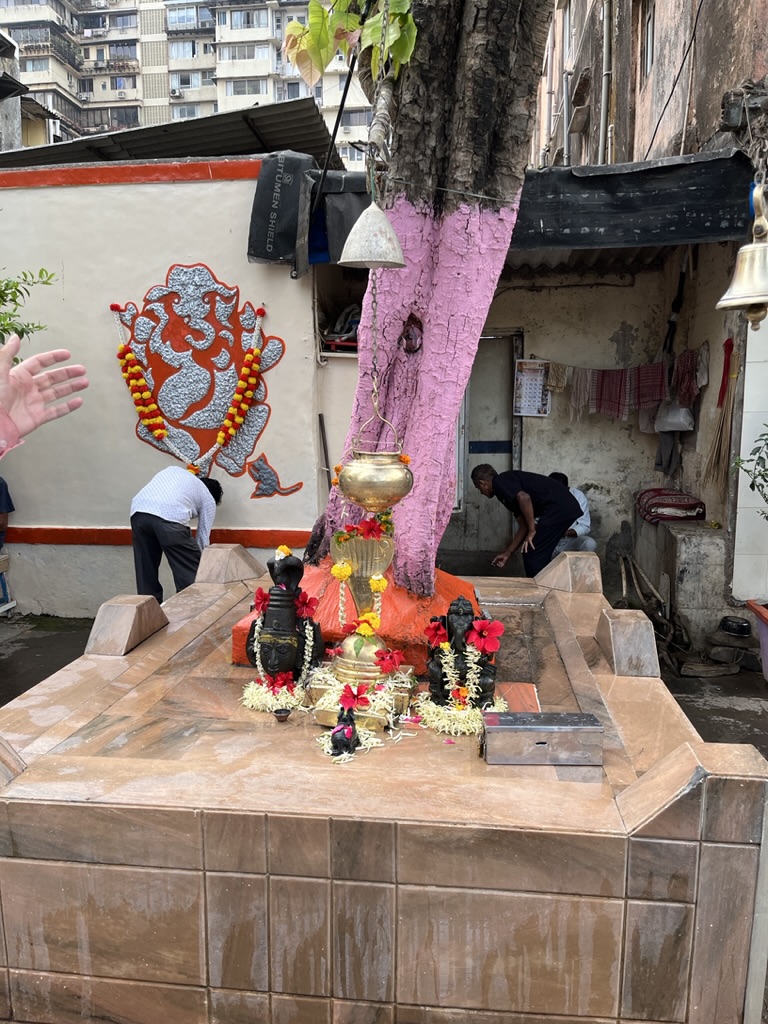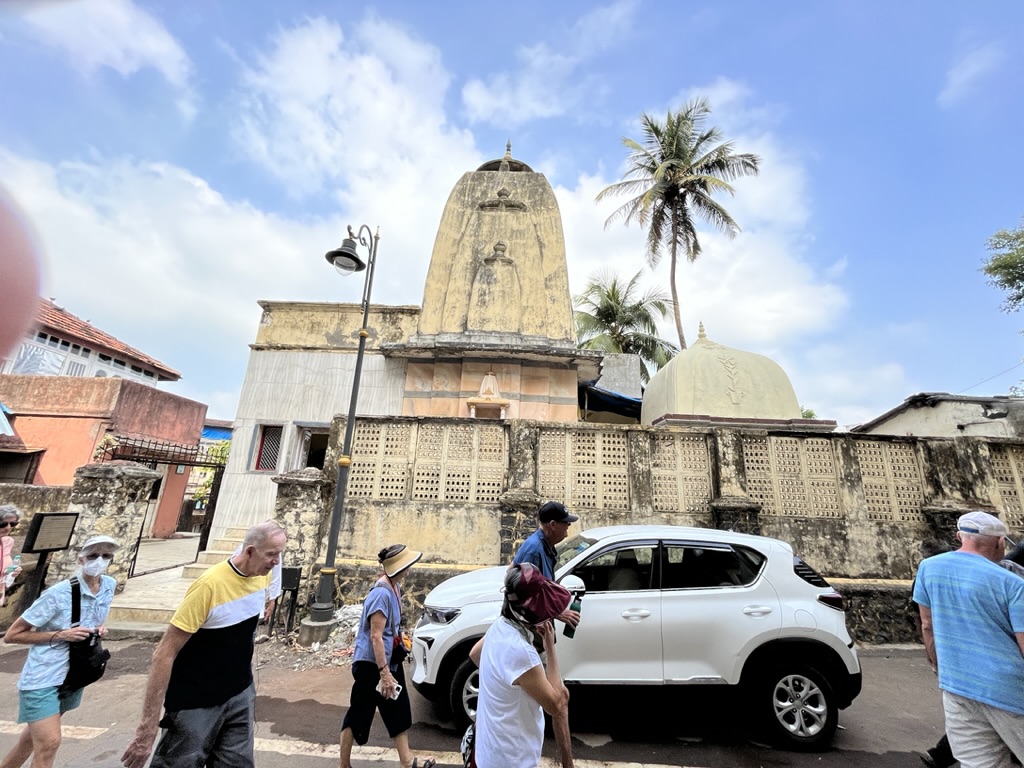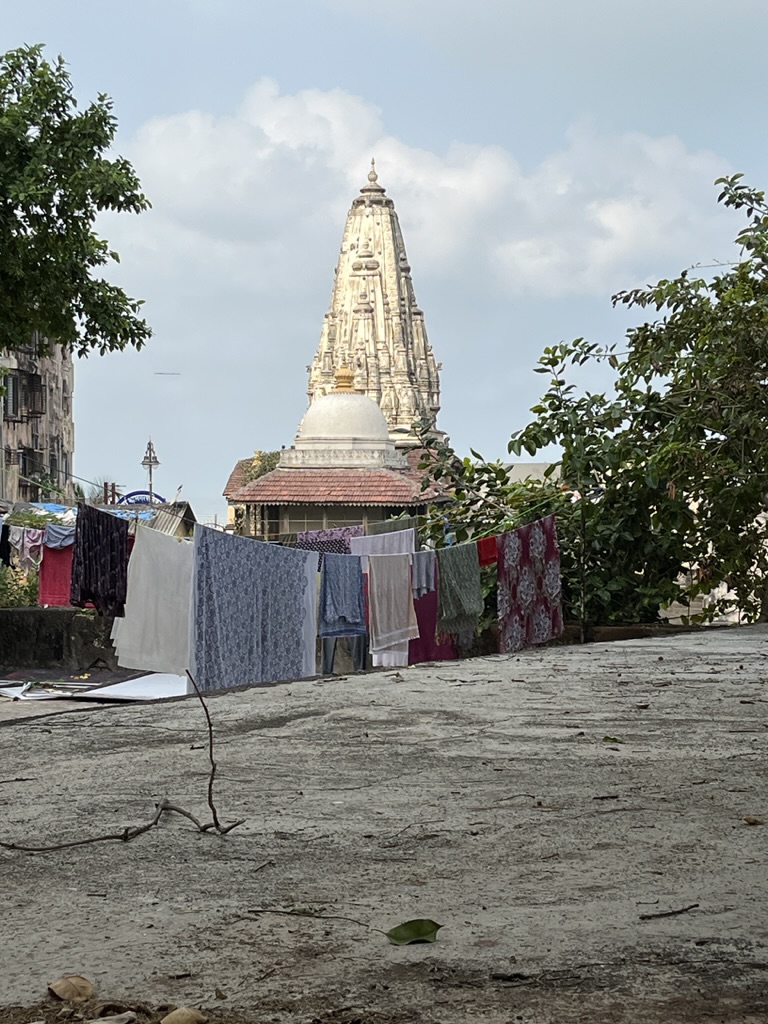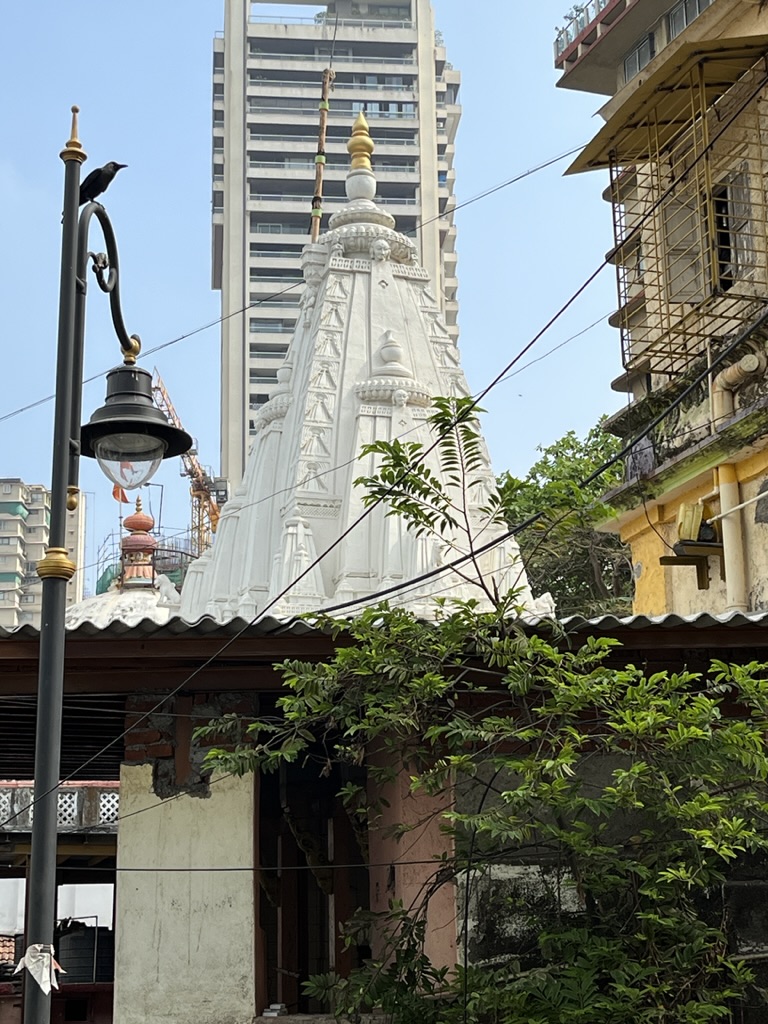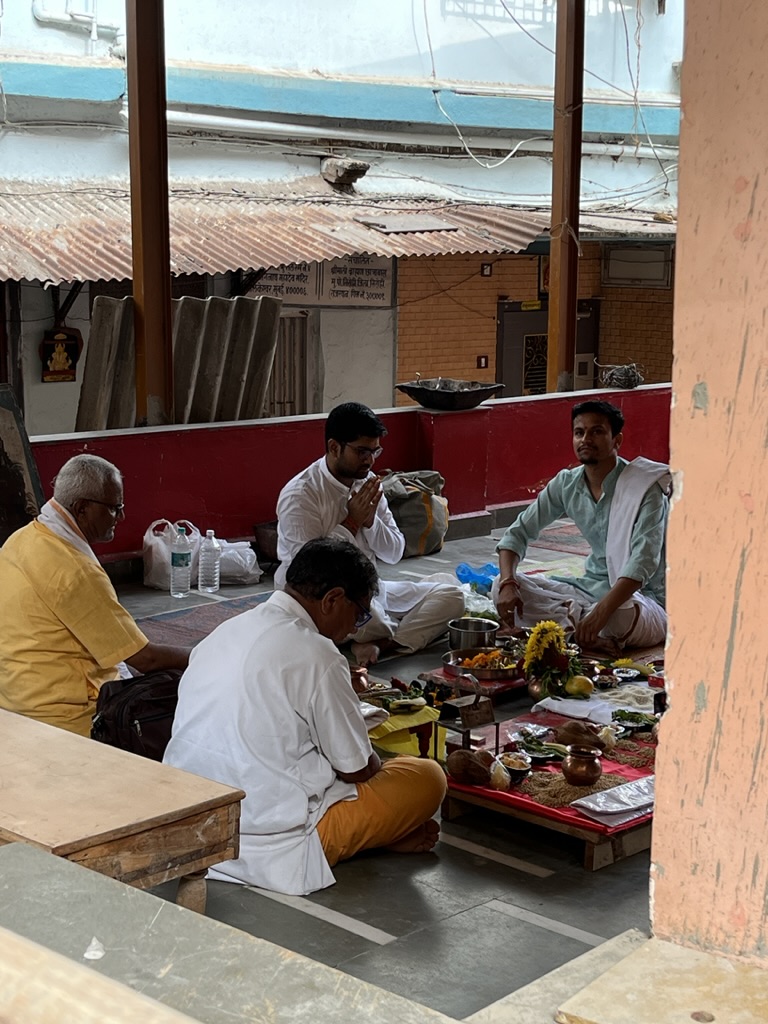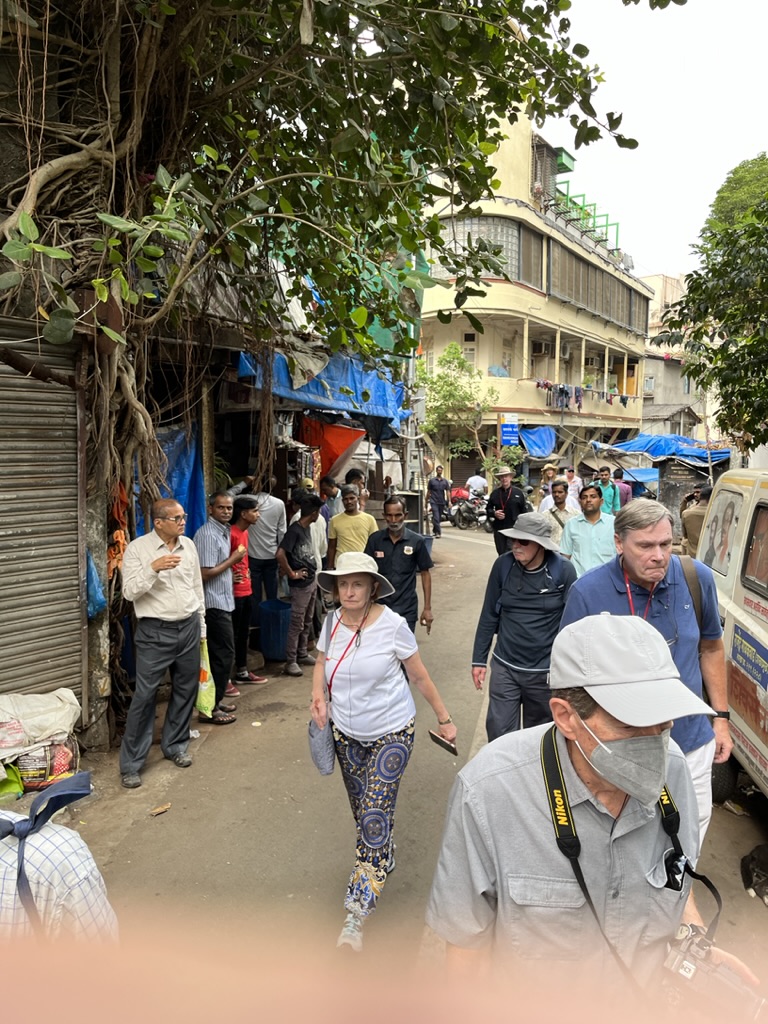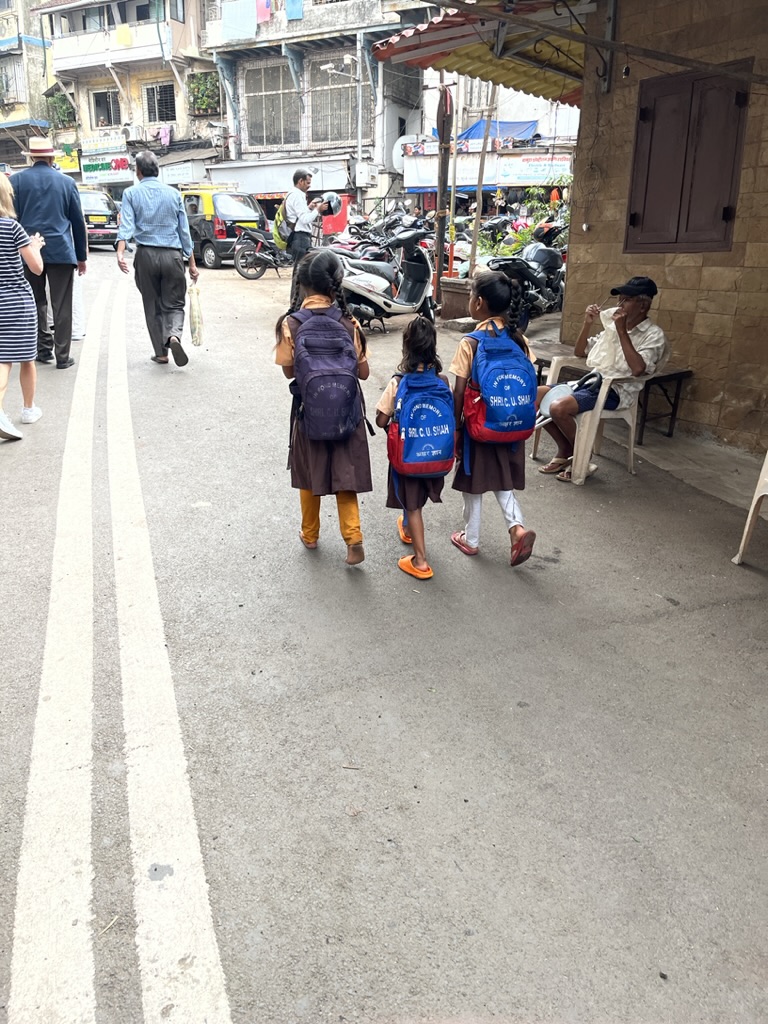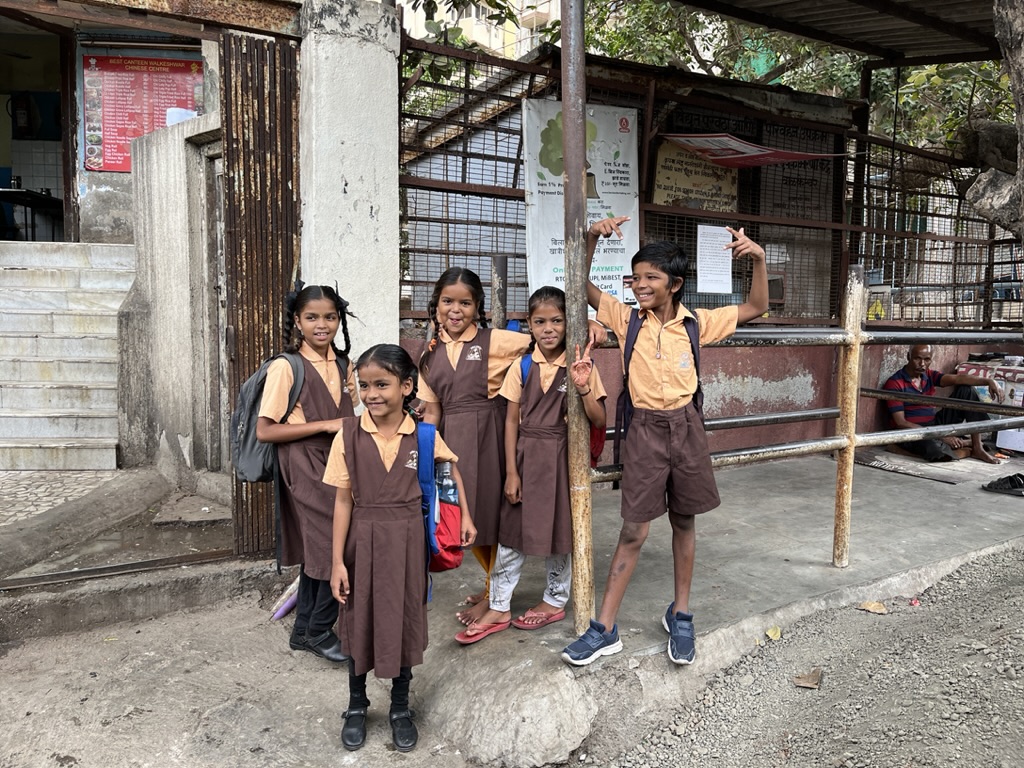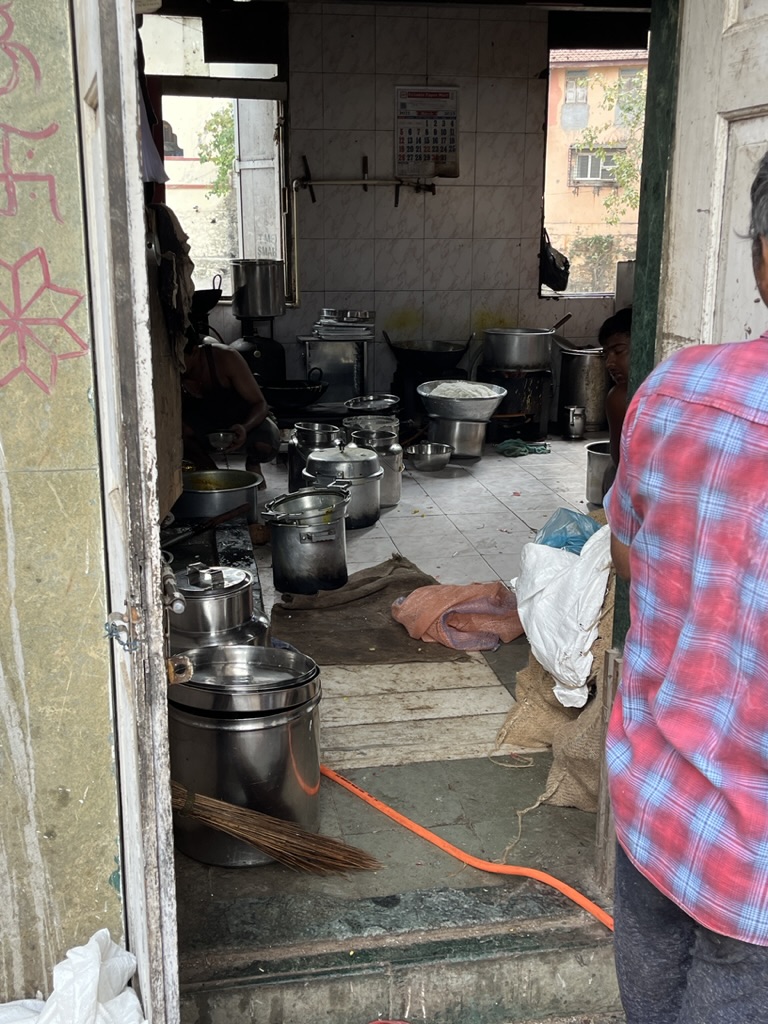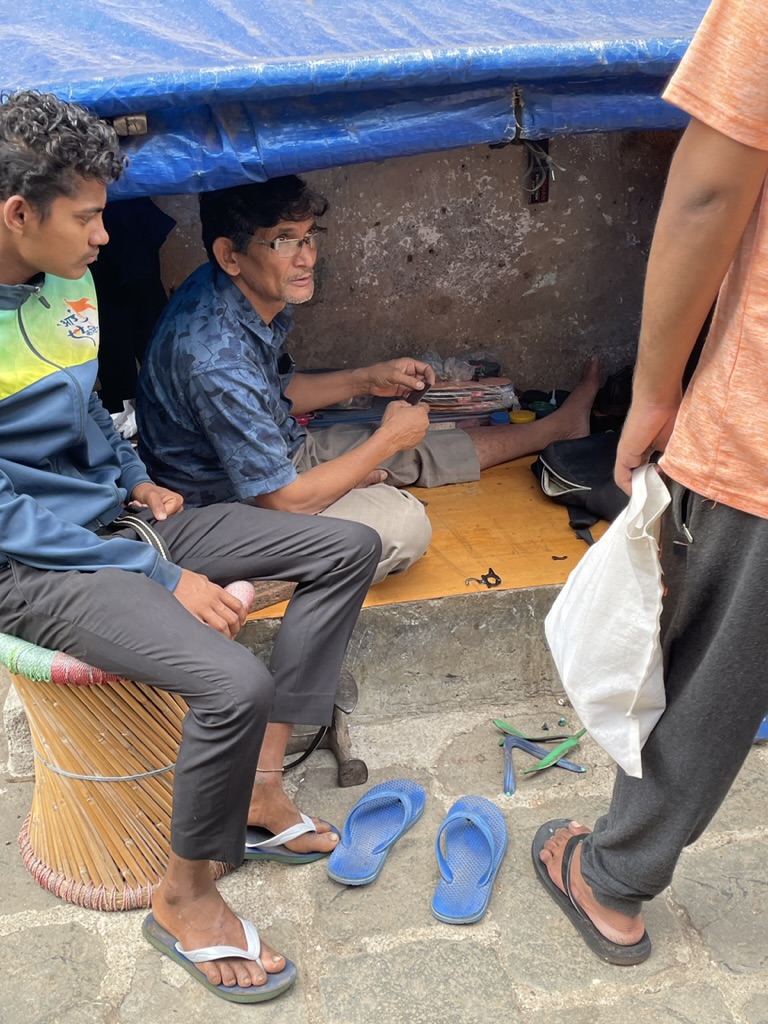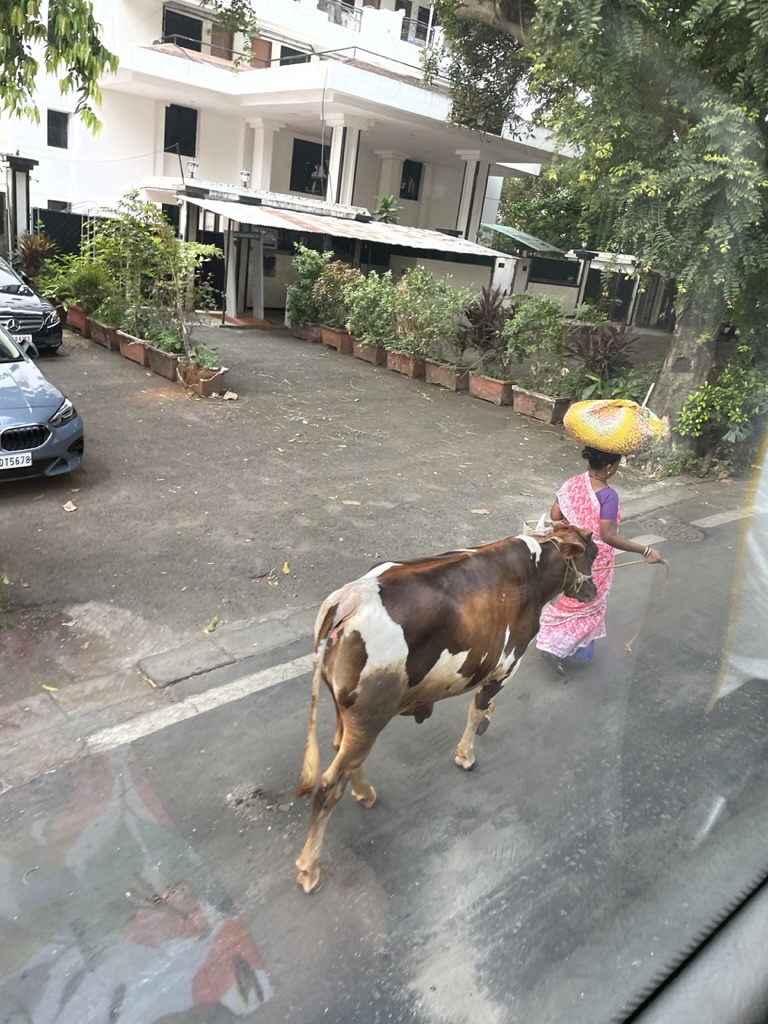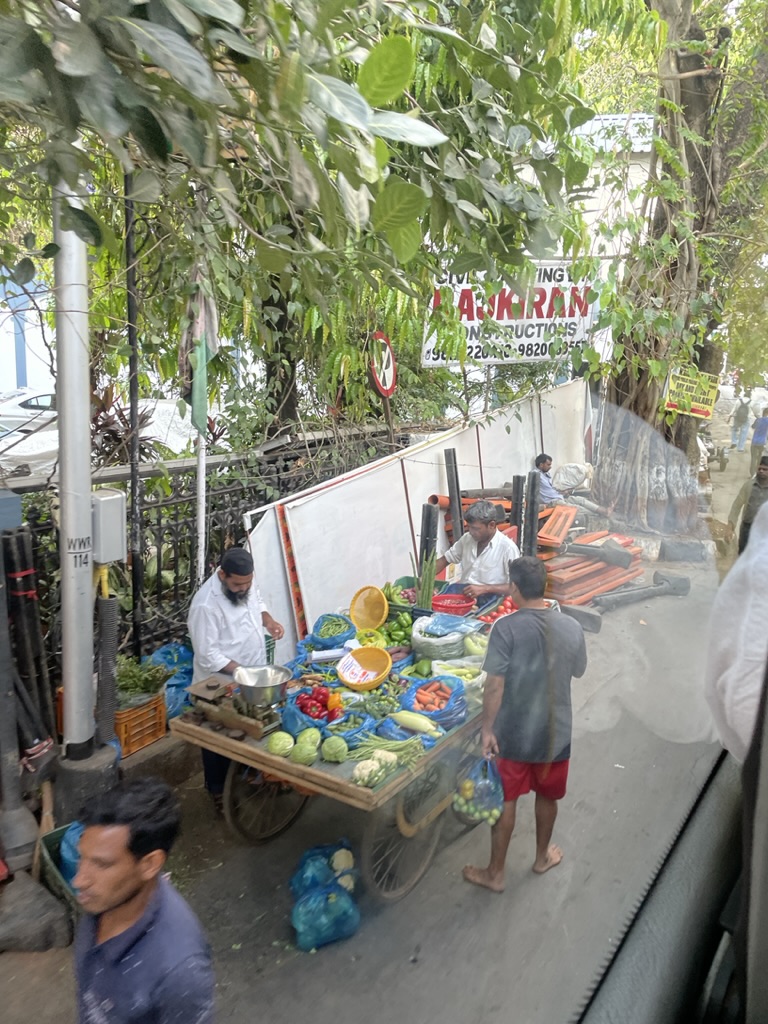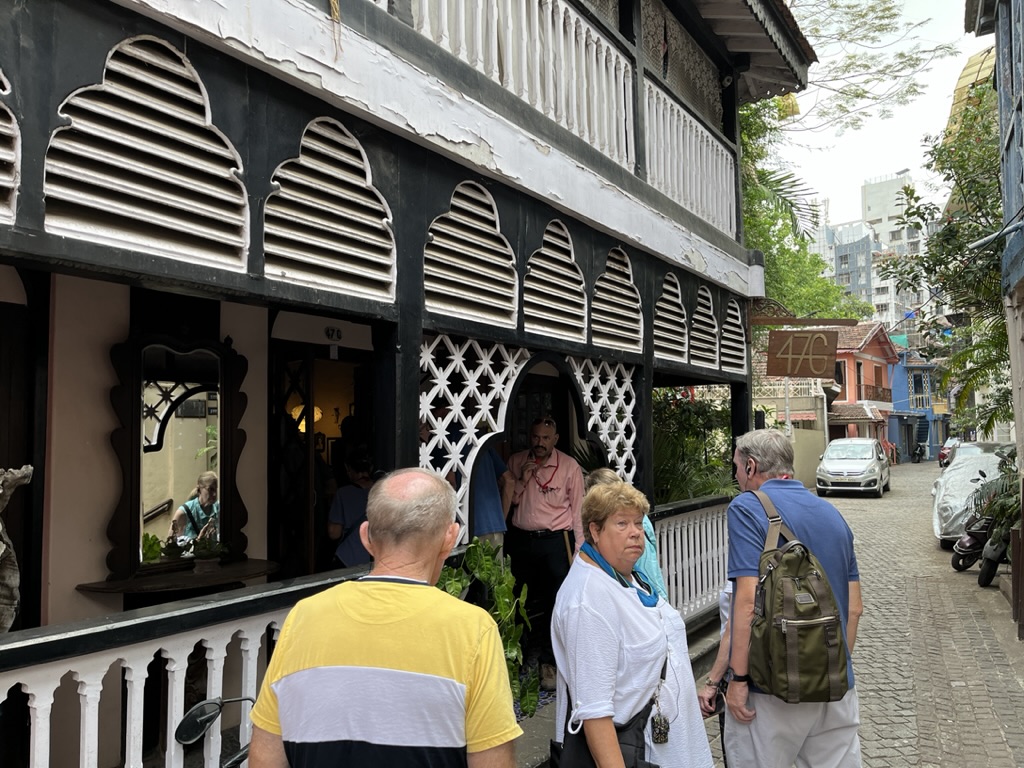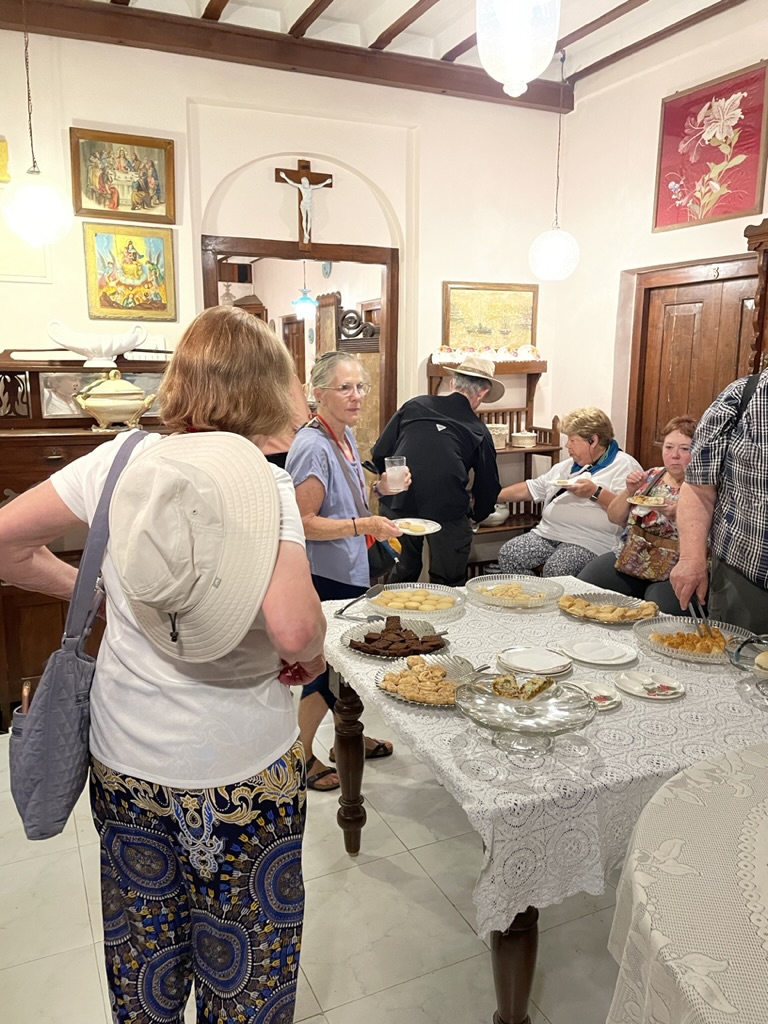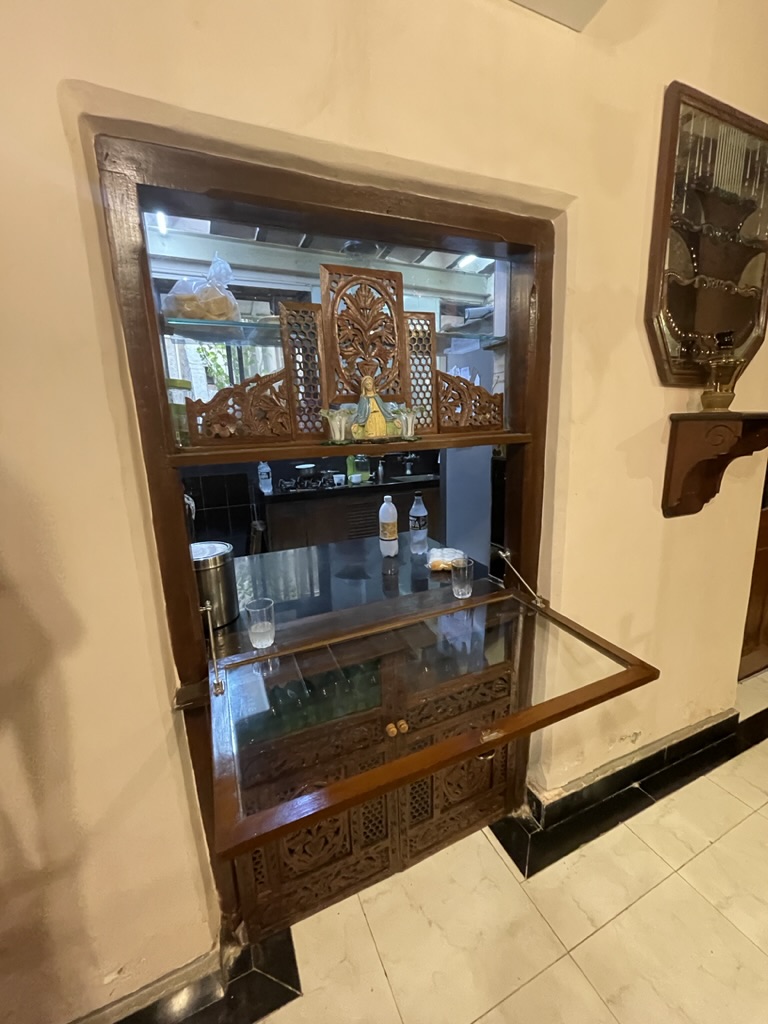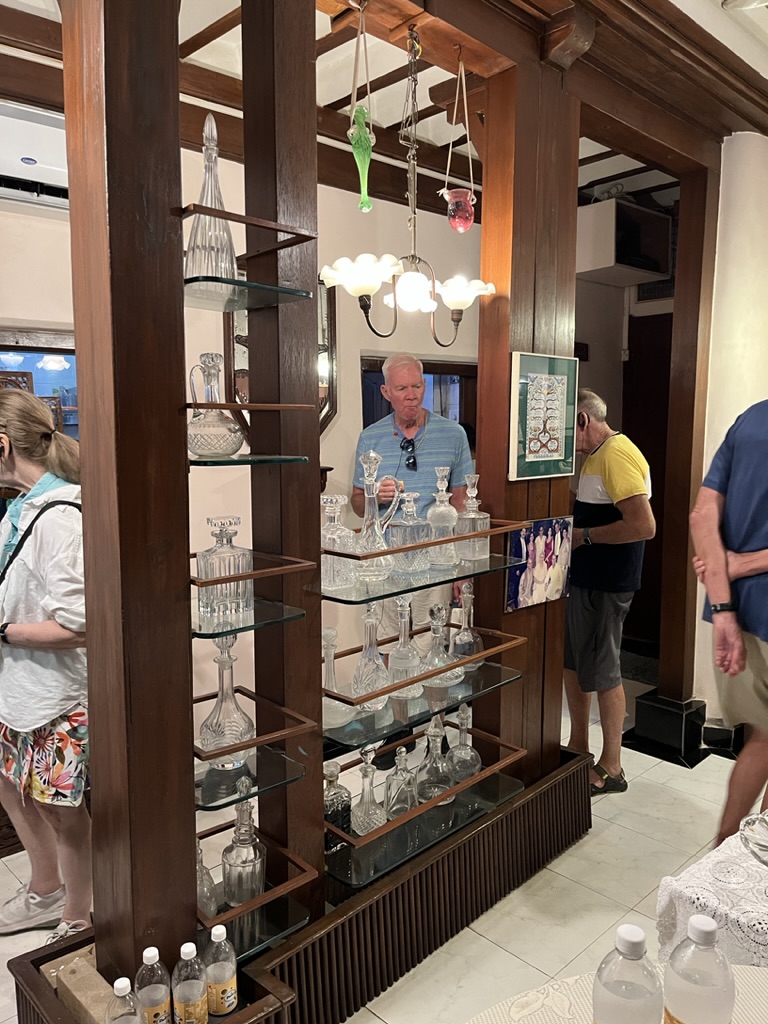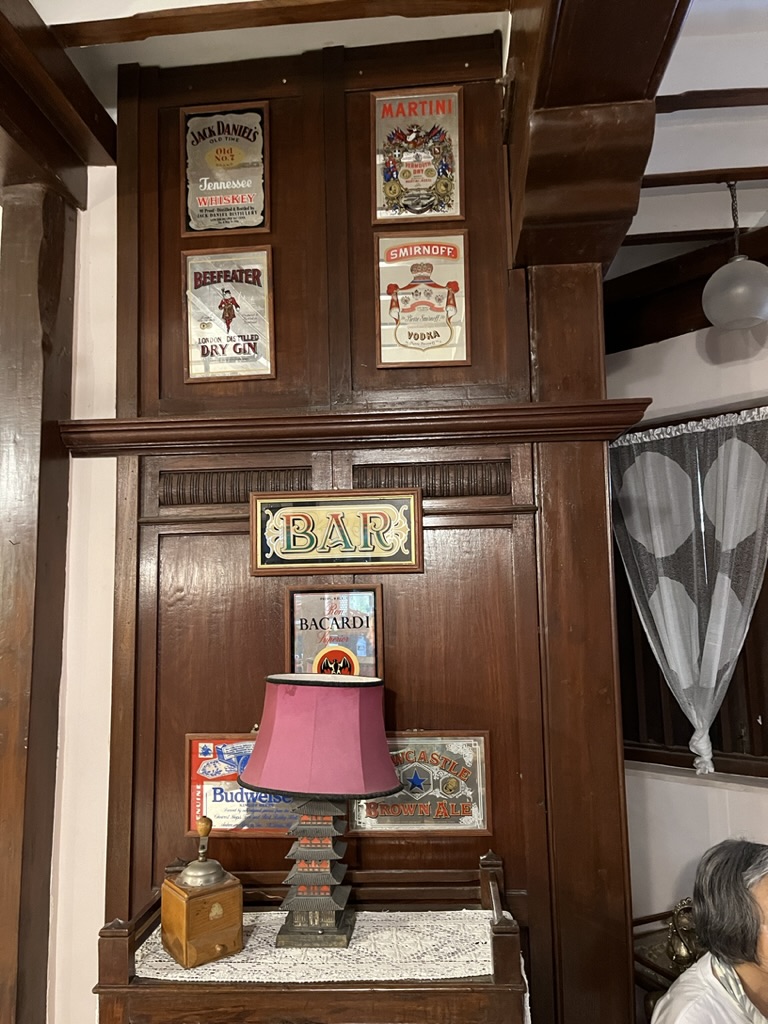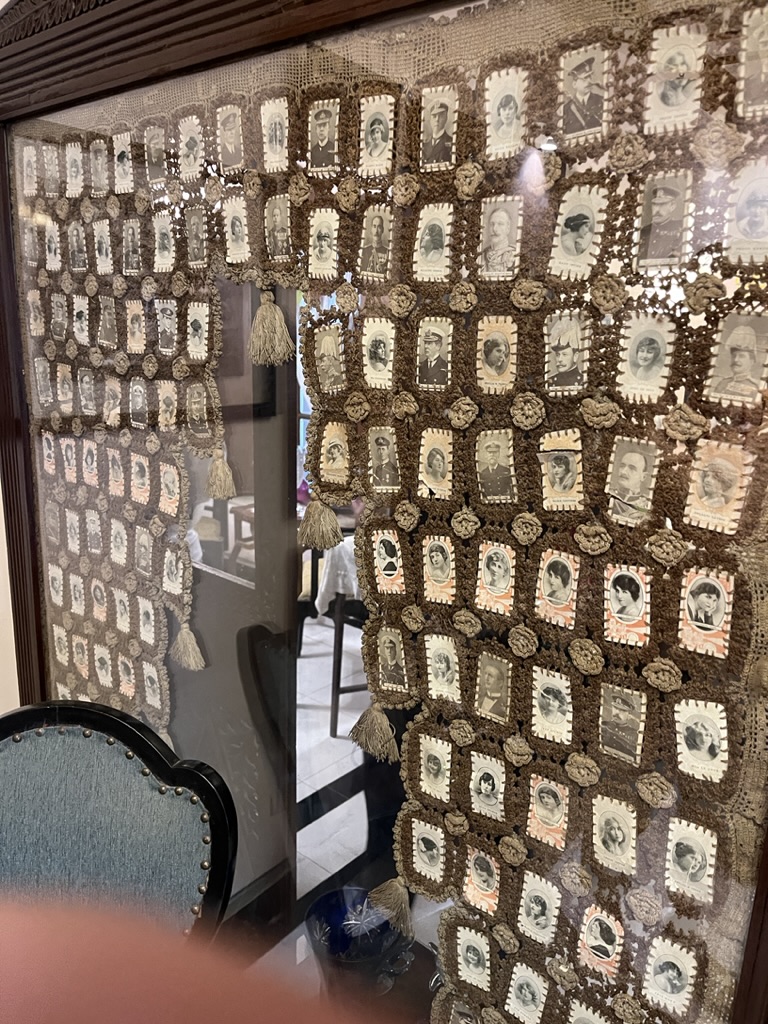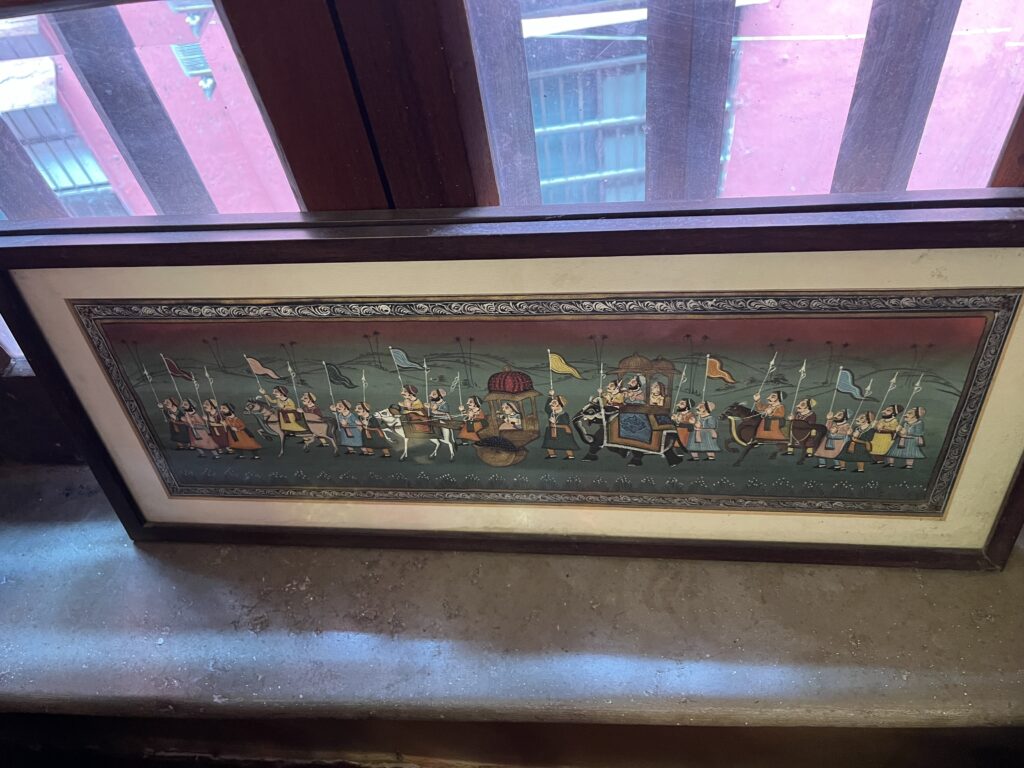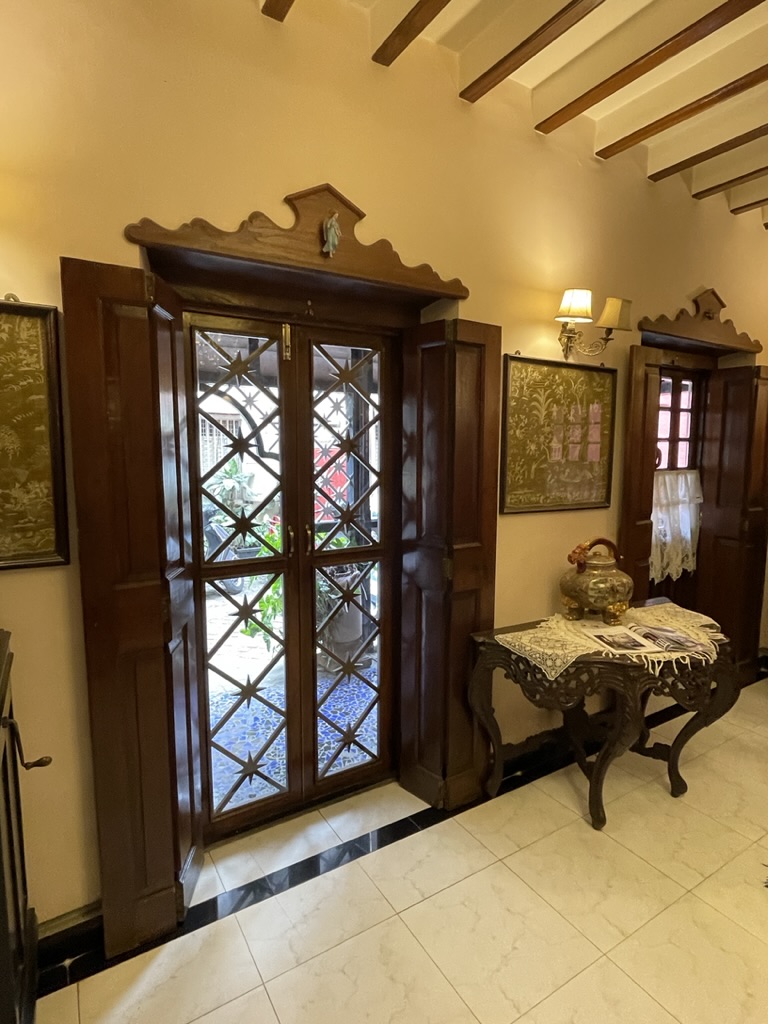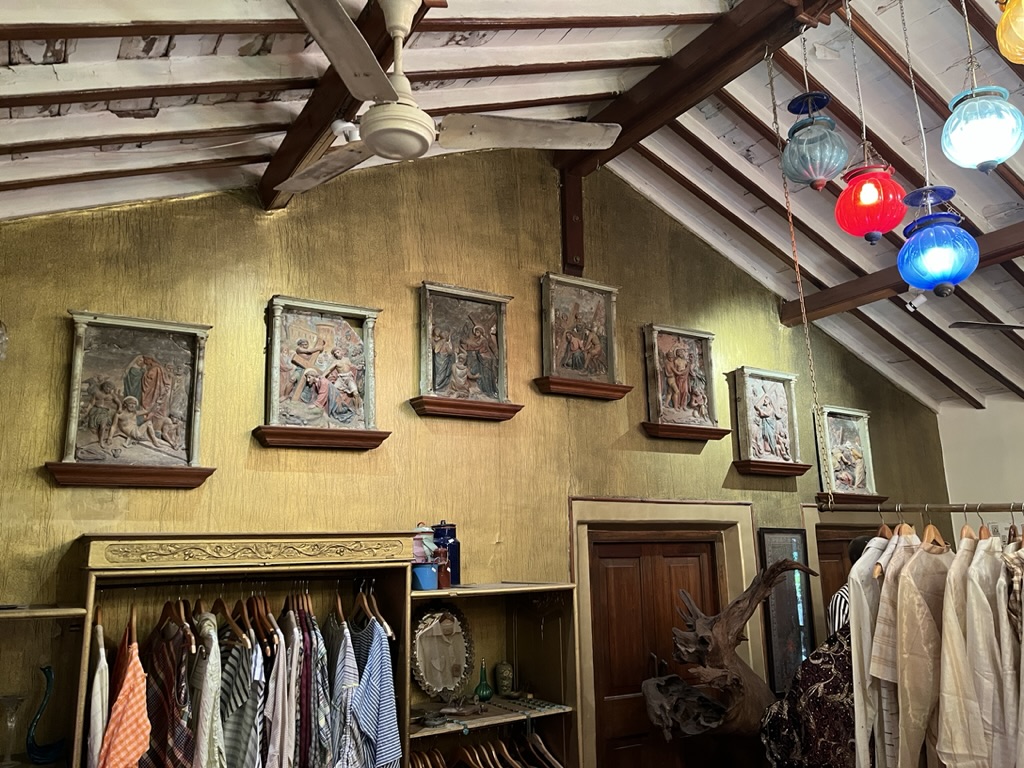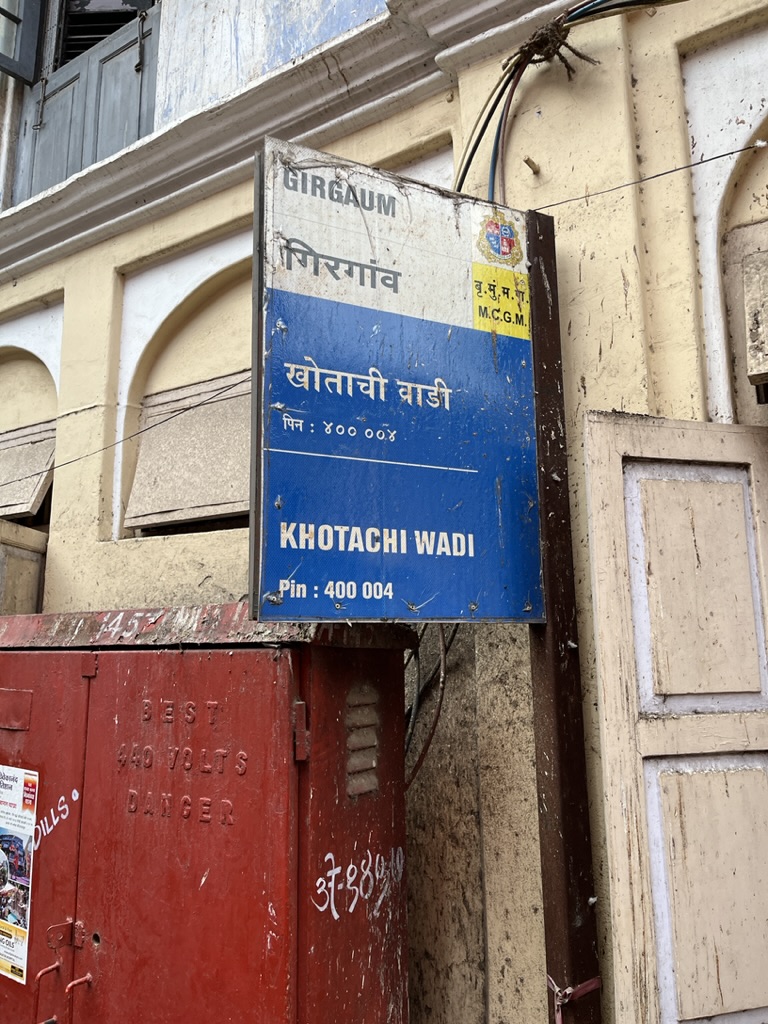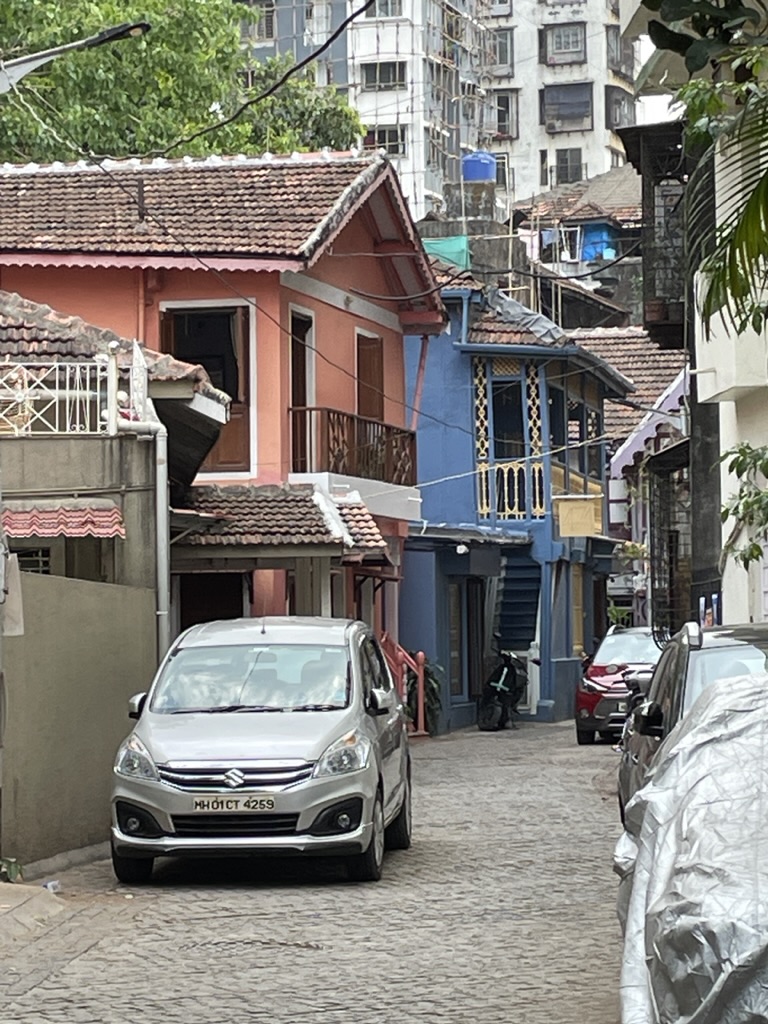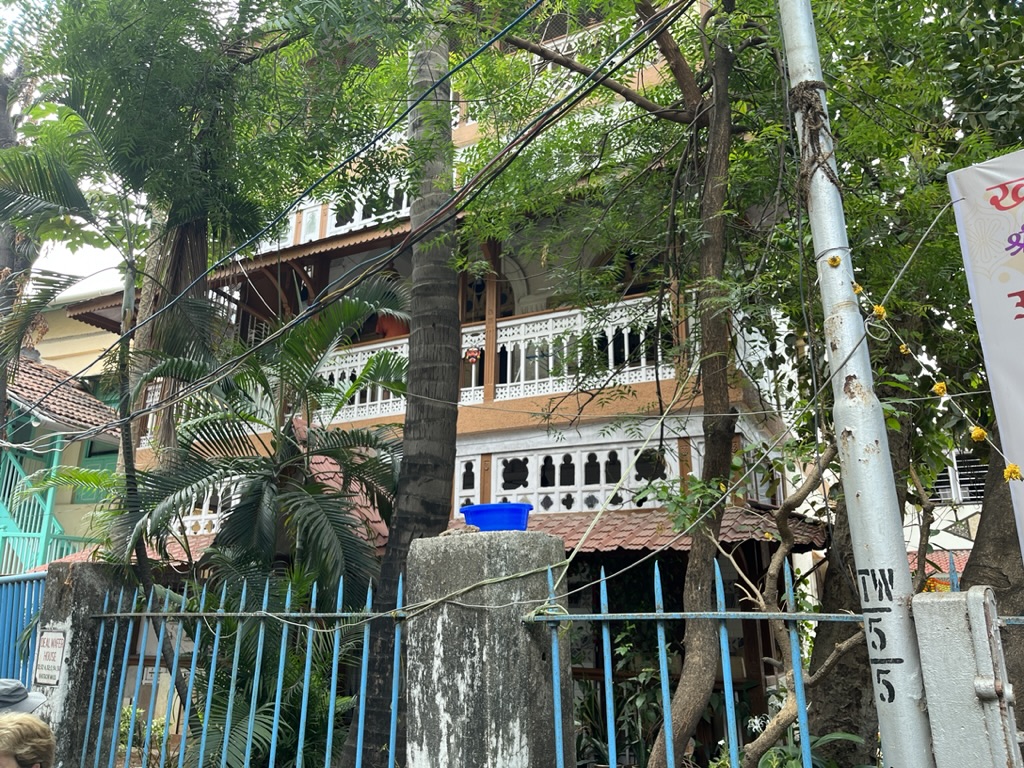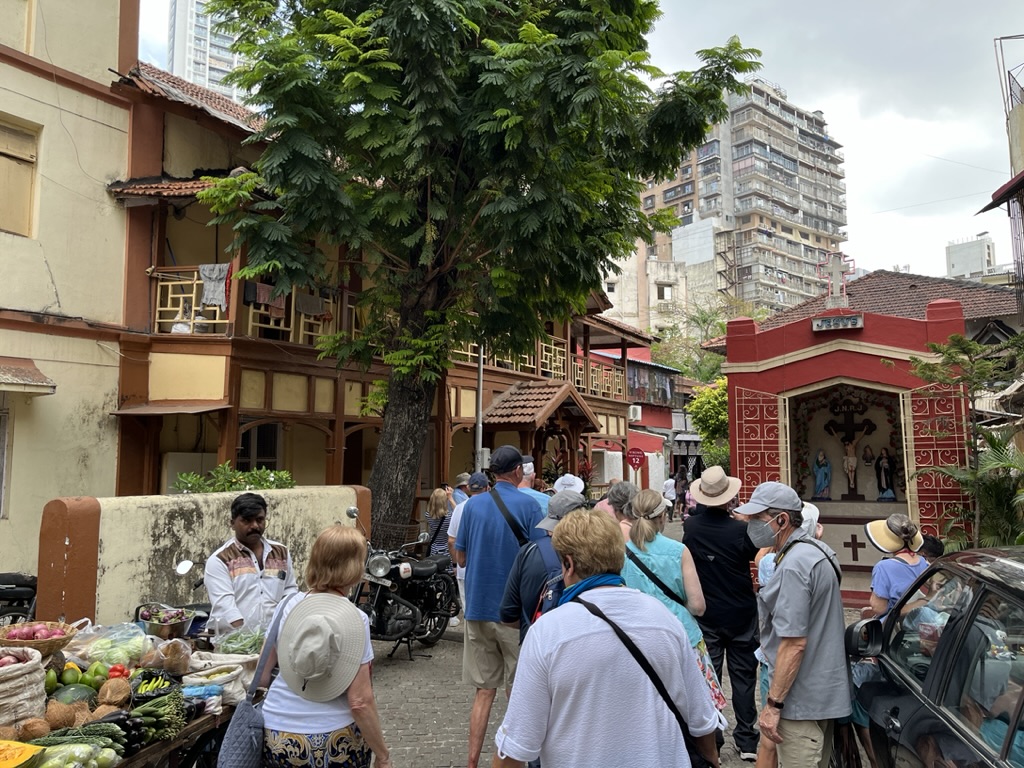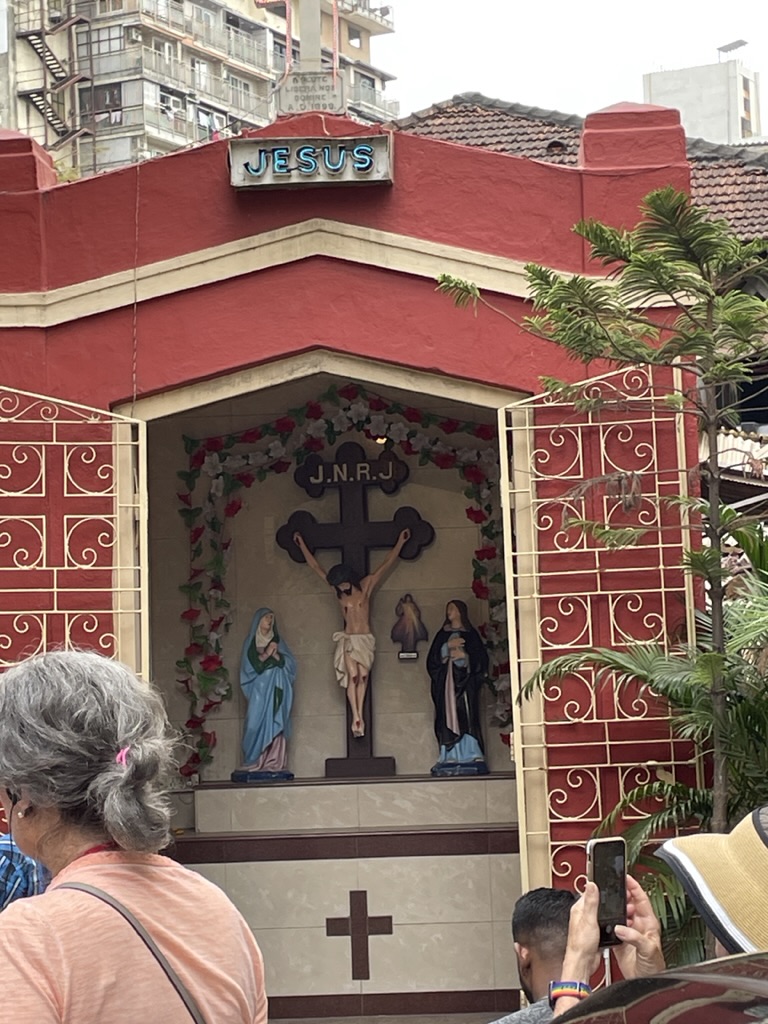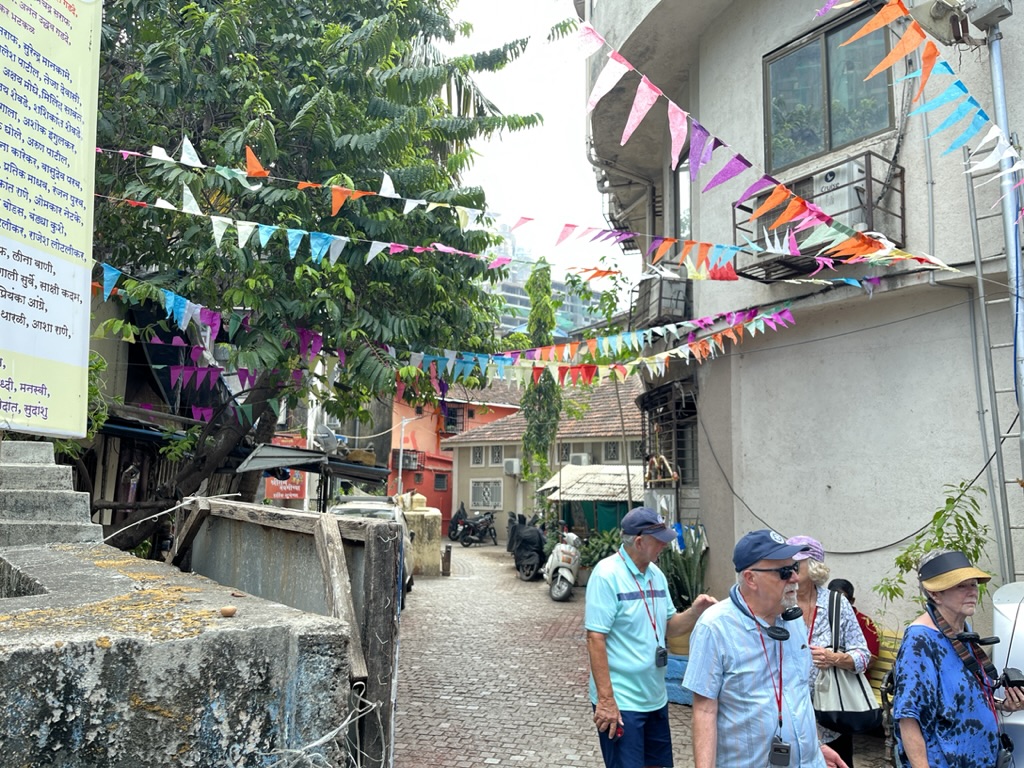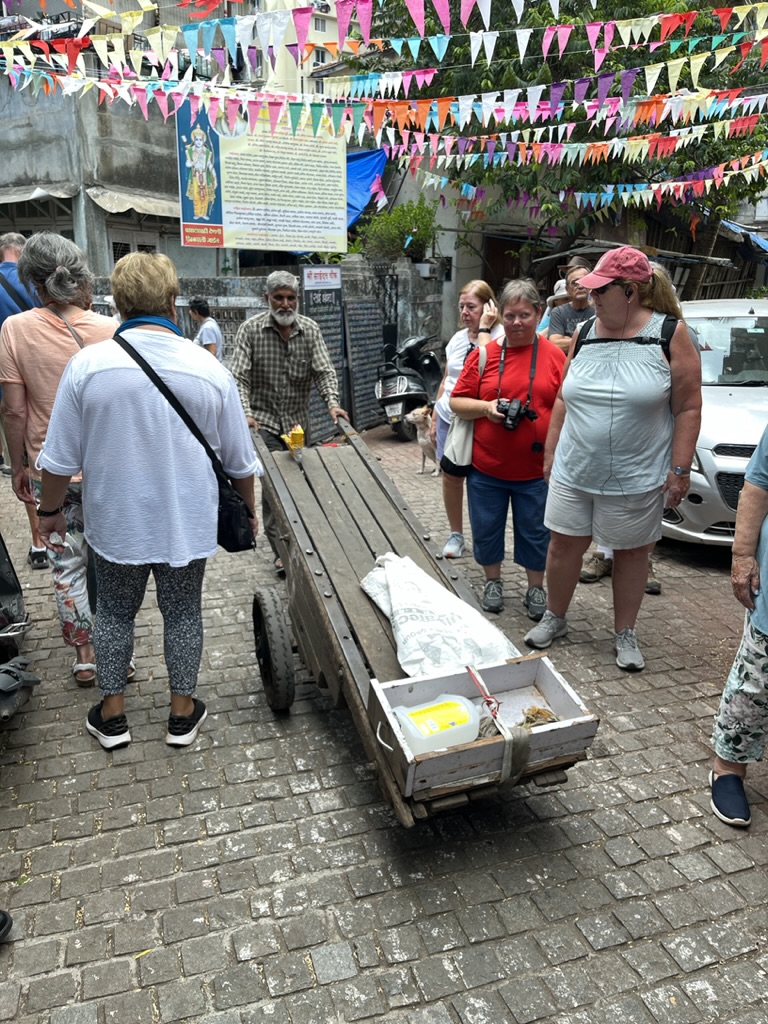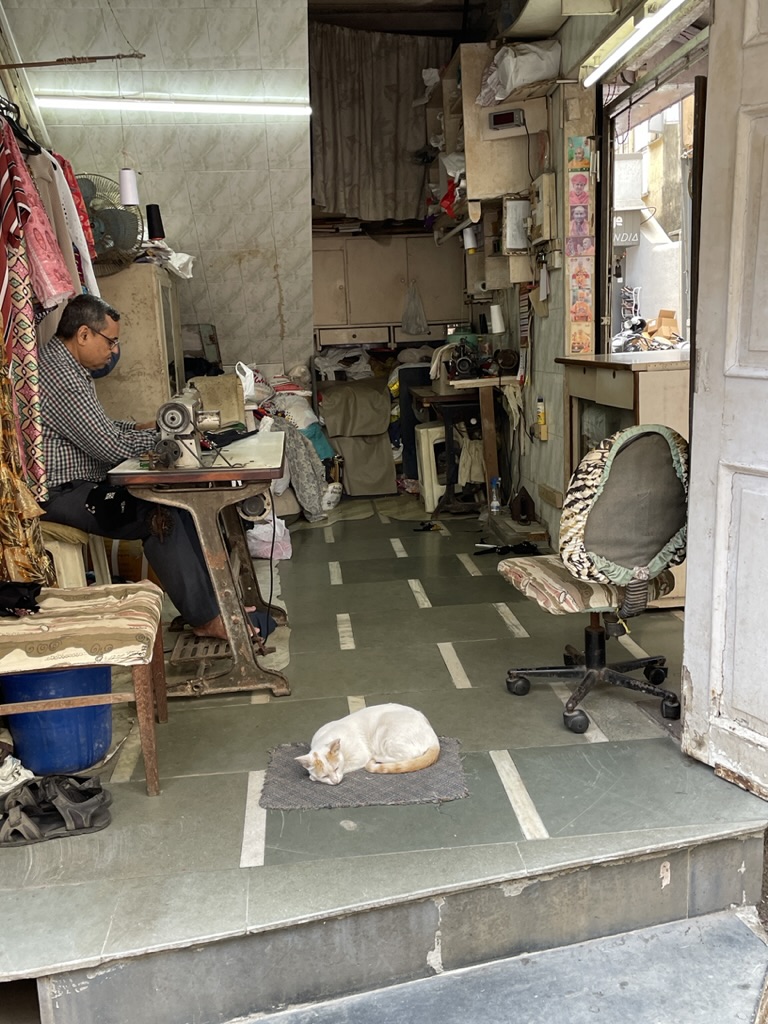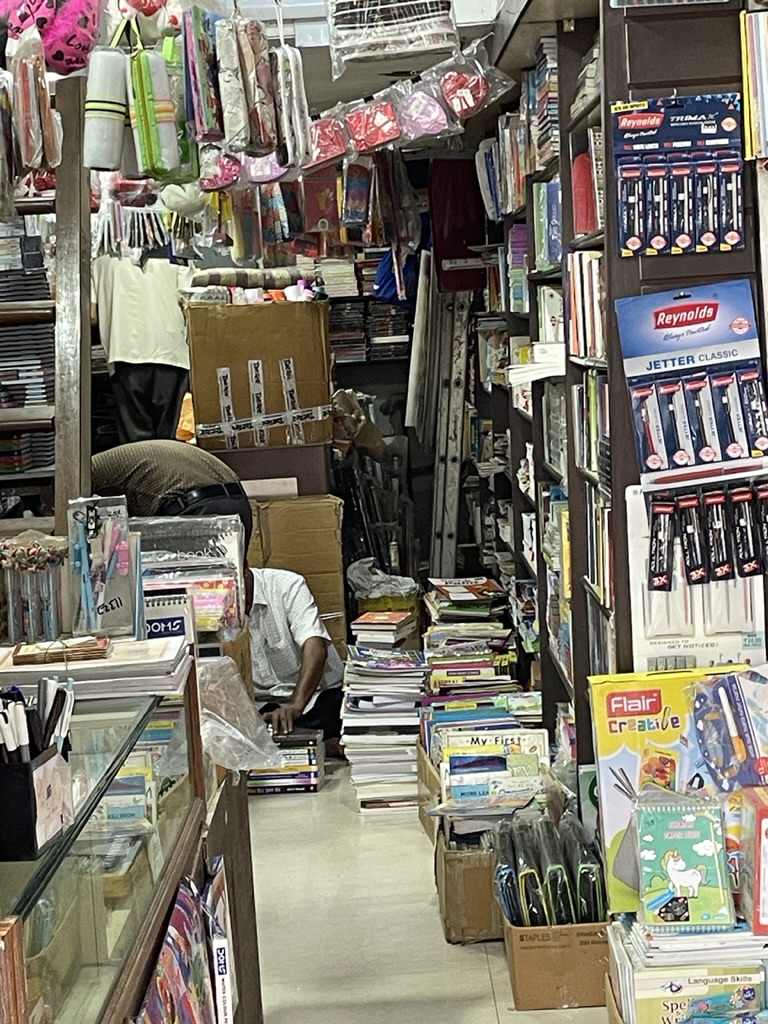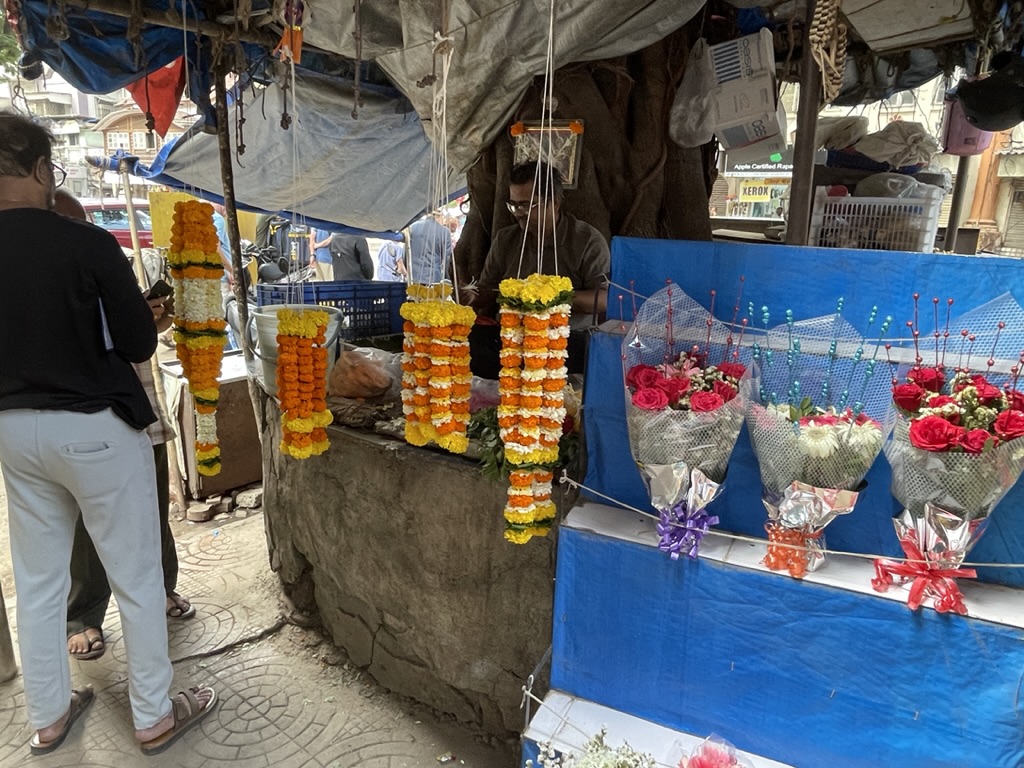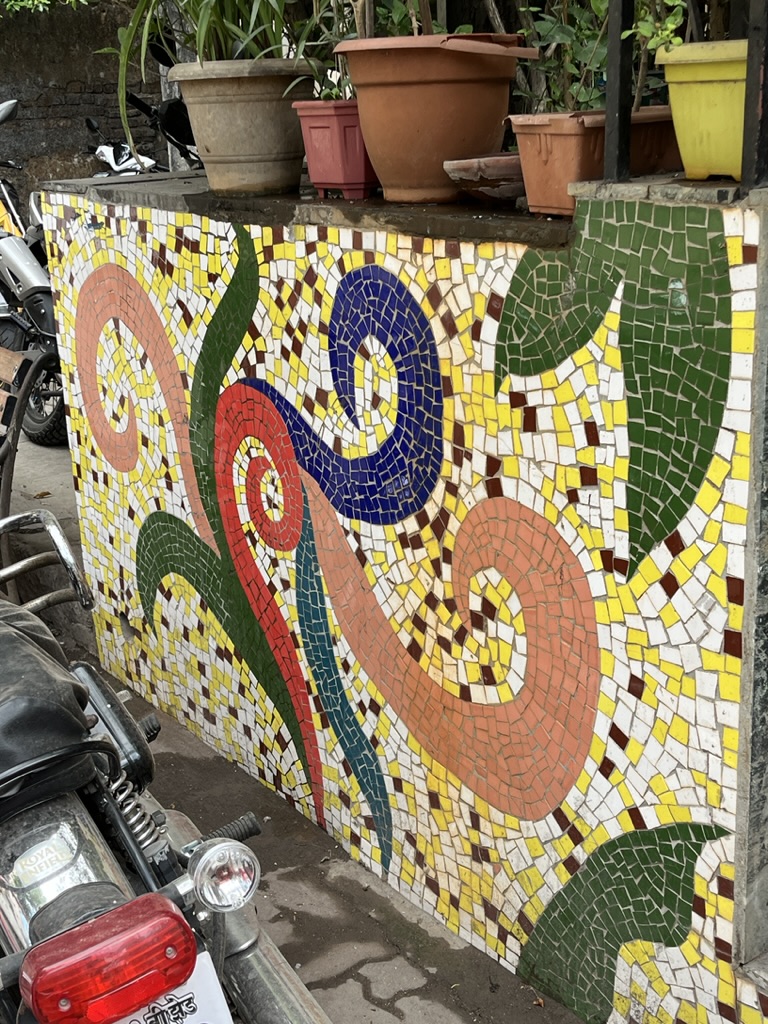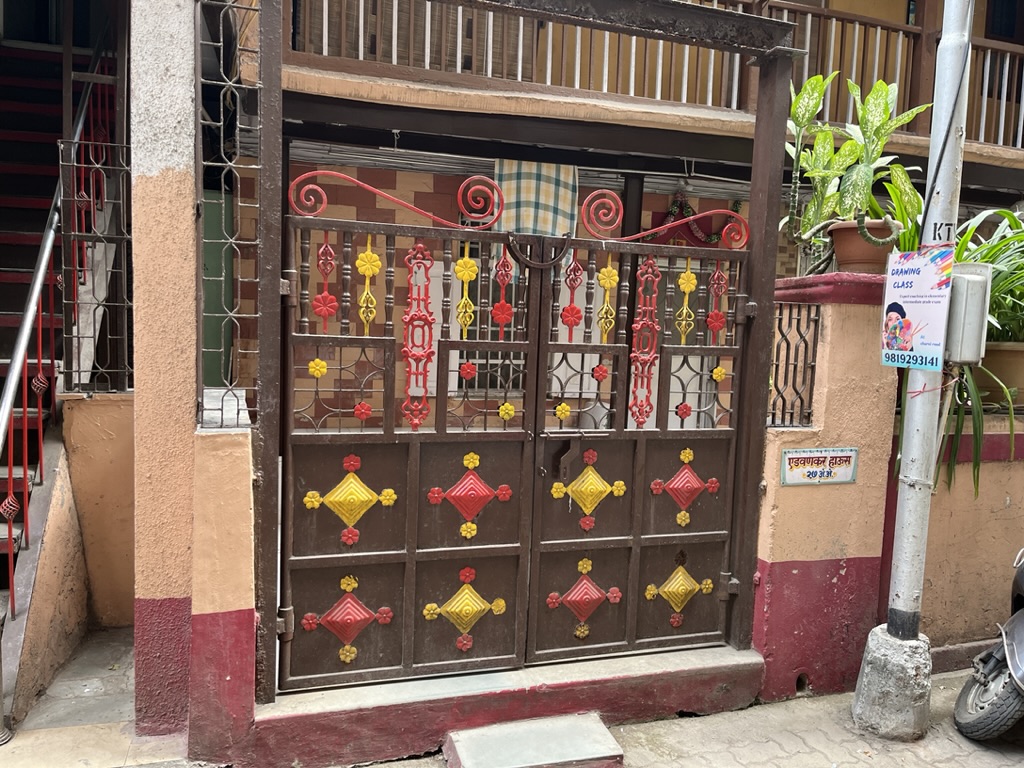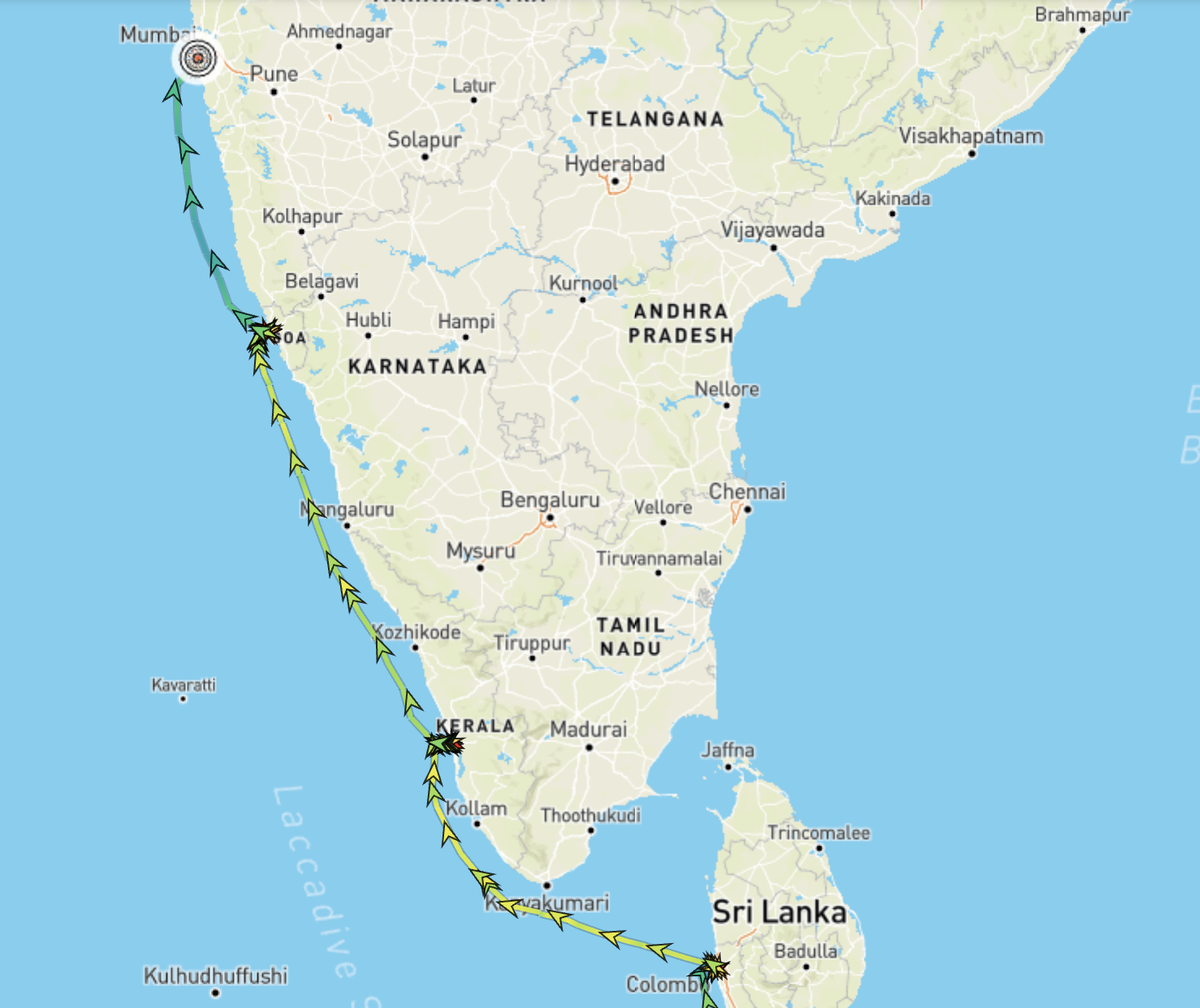
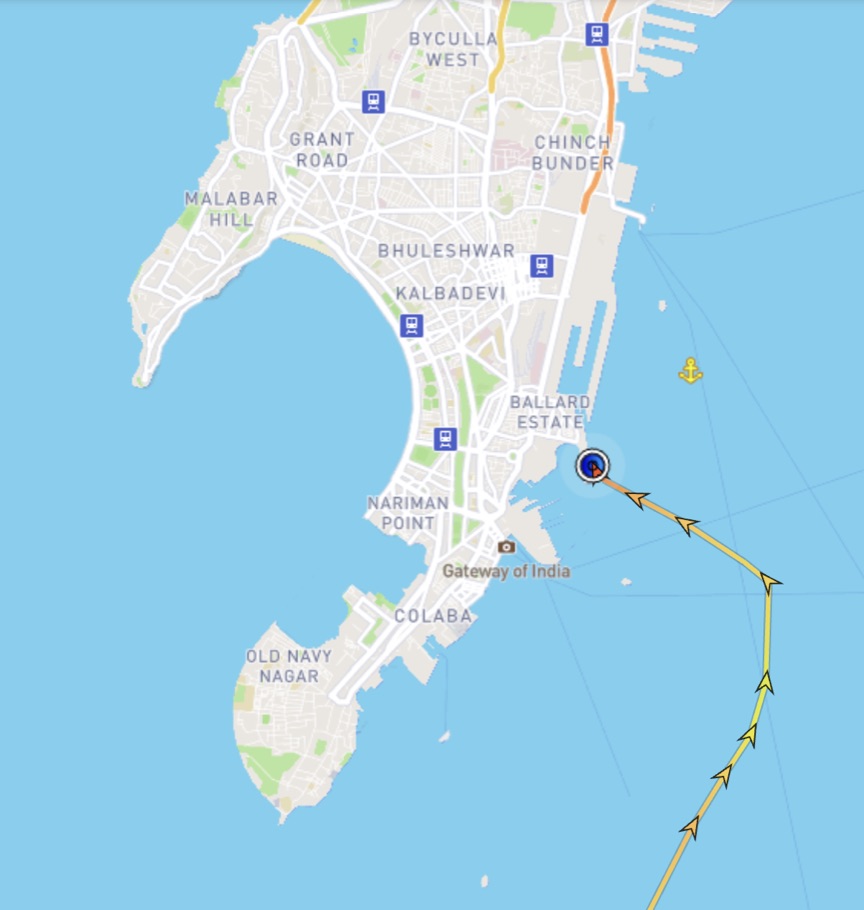
Another early excursion this morning: “The Hidden Charm of Old Mumbai.”
On the way to our first stop we passed several religious sites including this Parsi Temple. They worship fire and earth which are so sacred that to cremate or bury a body would profane it. The preferred body disposal method for Zoroastrians is “sky burial” by exposure to sunlight and birds of prey. Once a person has died, the body is of no importance and should be returned to nature.
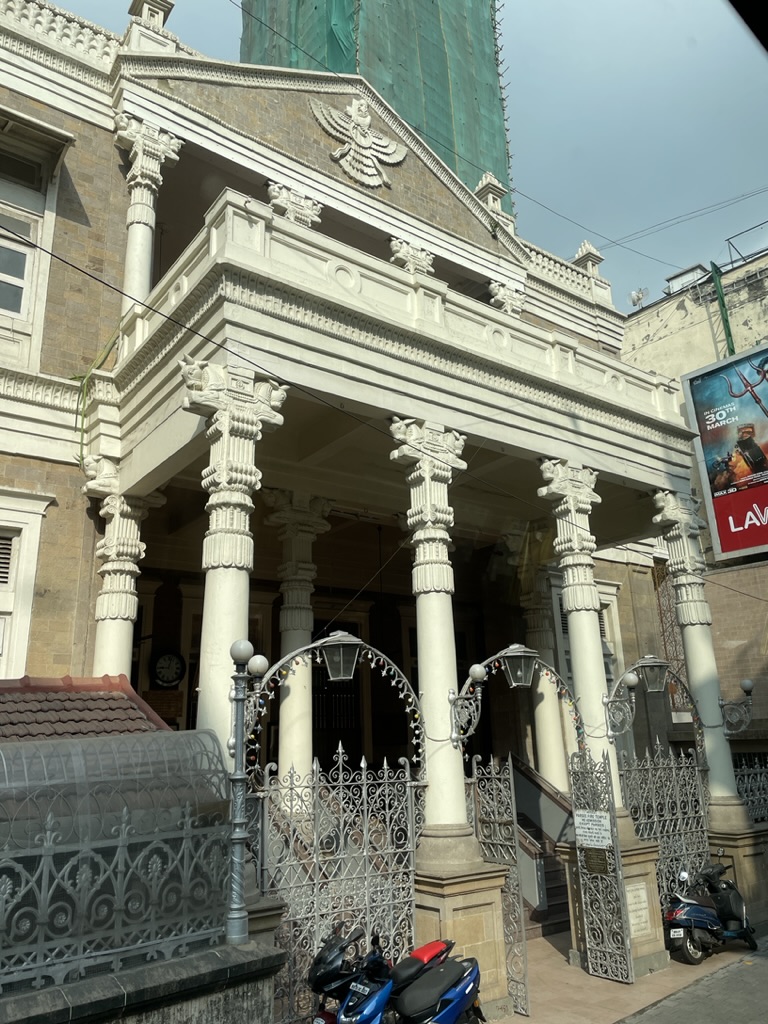
We arrived at an old and very quiet temple complex. Various temples surround a pool of water. (The tall stone towers were a way to light the streets at night – each little projection would hold a small mud oil lamp which someone had to climb up to, then fill and light each night.)
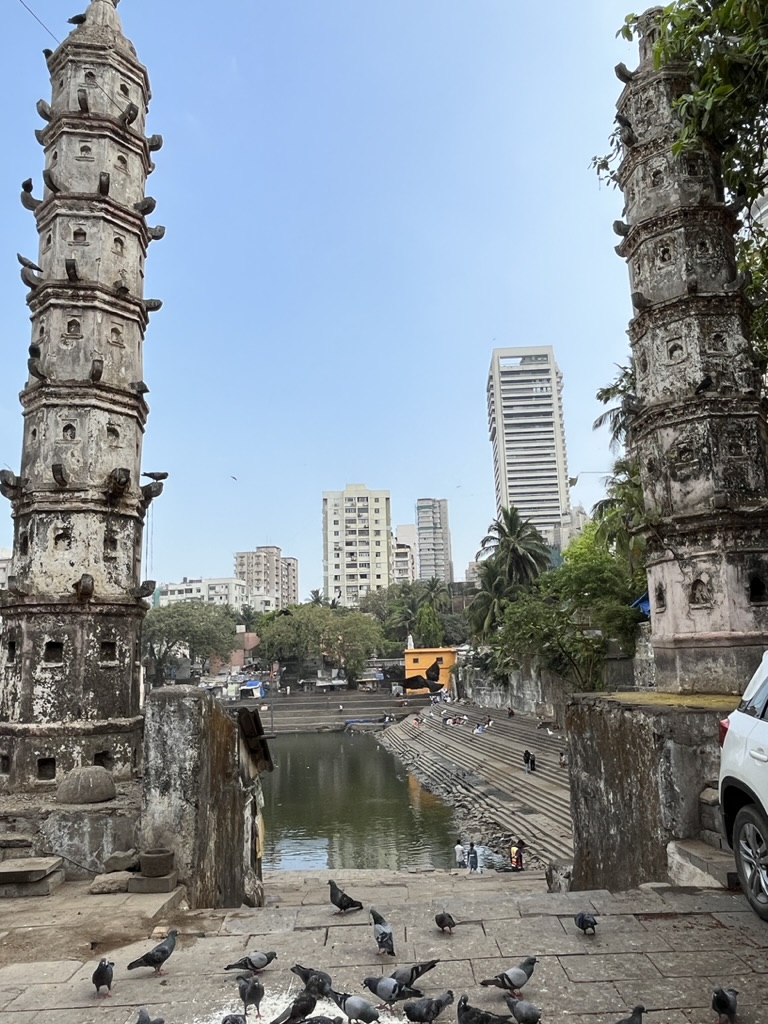
This truly was an oasis of calm in the midst of the bustle of the city:
Our next stop was an enclave of Portuguese-era bungalows that are trying to keep their historical homes and neighborhood from being developed by the ‘glass and steel’ towers of modern Mumbai.
We first stopped at the home of James Ferreira (lot of Portuguese last names in this neighborhood), one of the key figures in the movement to preserve the 26 remaining bungalows. He invited us into his home, gave a short introduction about his preservation work, and fed us cookies and punch. We had some time to look around (particularly at his upstairs workshop/boutique – he’s a clothing designer by trade) and chat with him about the house and the neighborhood.
Leaving his home we toured the neighborhood as our guide talked about life in these enclaves and their role as community in a mega-city.
He also showed us community living buildings called “chawls”. In a chawl someone will rent “space” – generally space in a shared living/sleeping room and use of the kitchen – along with the bathroom facilities down the hall. These community living arrangements are still in use today as people arrive in the city looking for work and among young people who want to save as much money as possible.
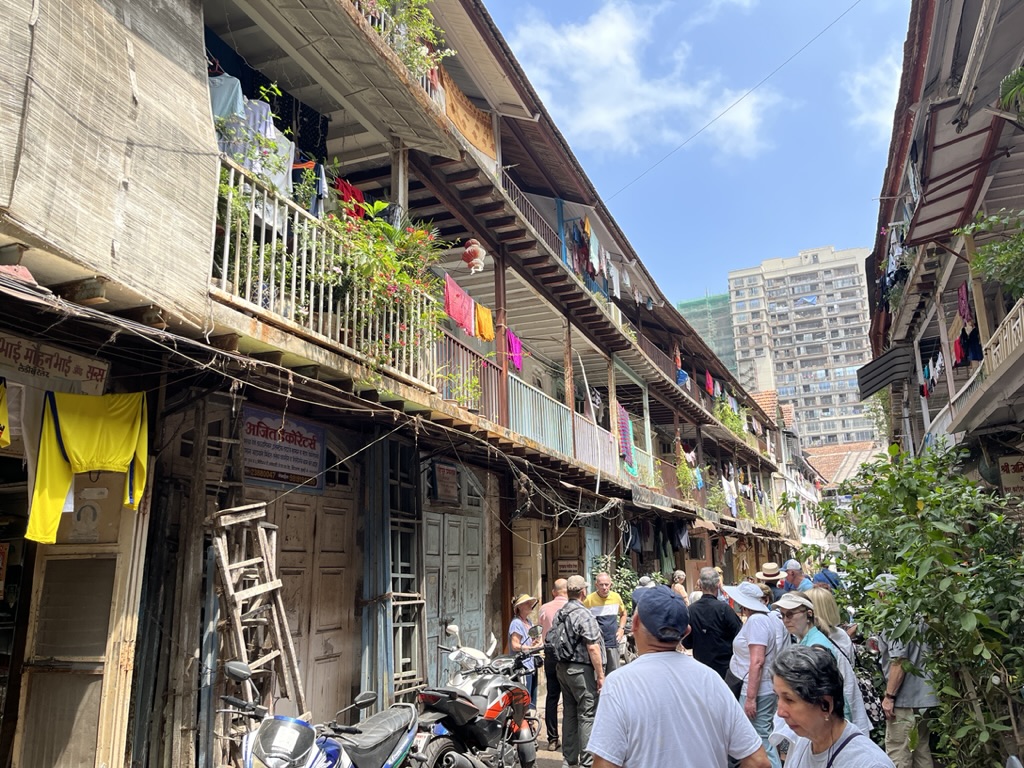
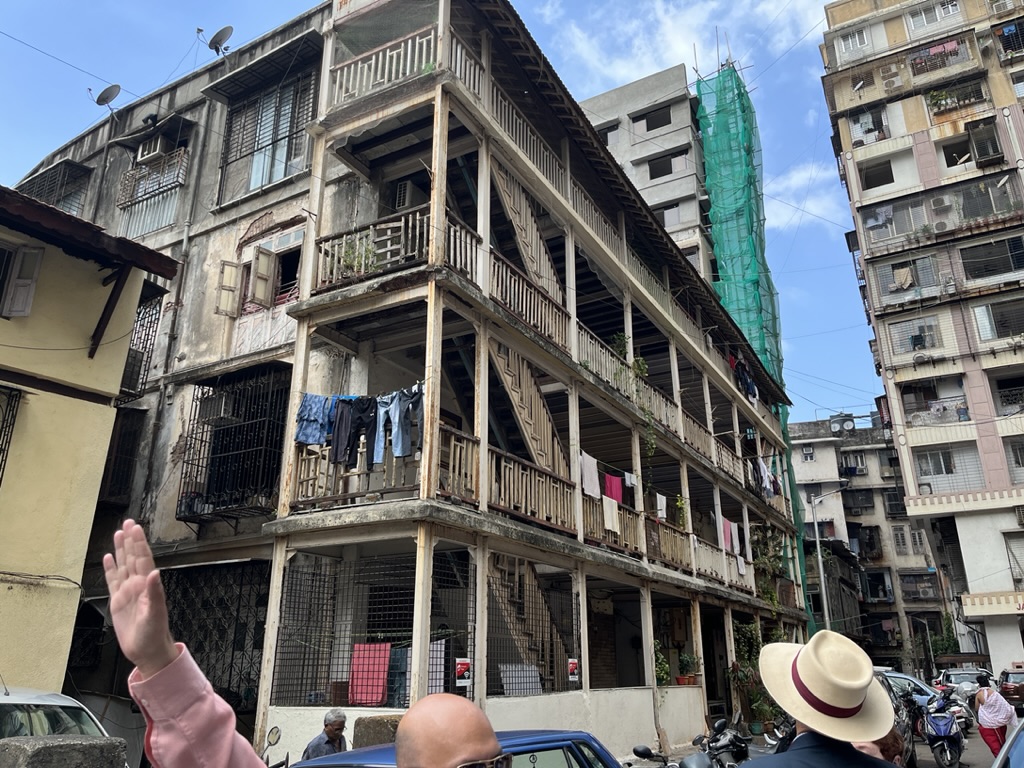
Following this tour it was time to reboard the bus and make our way back to the ship.
Shortly after we returned they rolled up the red carpet, stored the gangway and mooring lines, and we were on our way to our next port – Jeddah Saudi Arabia.
We had lunch and, after setting sail, the Indian Navy (we were docked quite near their headquarters) quit blocking our Wi Fi so we could begin working on our backlog of blogs, breaking at 4:30 for a lecture on “The Geohistory of Eurasia and India” and the 6:30 lecture “Planets, Ours and Others.” These were both topics we already knew (although I didn’t realize the Red Sea is being stretched wider as the African and Saudi Arabian plates pull apart).
We have a new crop of enrichment lecturers and this looks like a good group.
BBB was back (we don’t have Bruce’s Brain Busters during multi-days in port). We celebrated our return with a whopping 11 of 20 – slightly over 50% but out of the running.
Then it was back to the stateroom and off to bed.
Tomorrow we get serious about catching up on the Blog posts.
Till then, Nite all, R
Cheryl’s Factoids – GEOHISTORY OF THE MEDITERRANEAN SEA:
- 5 million years ago the earth’s crust around the Strait of Gibraltar heaved upward – forming a dam between the Atlantic Ocean and the Mediterranean basin. Without water from the Atlantic, the water level in the basin slowly dropped creating desert conditions for thousands of years. The Mediterranean basin was 3 miles deep and covered in a layer of salt. Over time, the climate became less dry and salty pools of water would collect under places that received water from the uplands of the basin. After 170,000 years, the Strait opened up again letting in a deluge from the Atlantic – the water rose by 30 feet per day until the water levels were equal.
